№ 18: Johannine Allegory and Baby Goats
Life in San Francisco, the Upper West Side, Birmingham, and Fox Hill
Dear all,
This is it: you are experiencing deep summer. The most important survival/comfort tip I (Susannah) can offer is that you should all stock up on and liberally use Doctor Bronner’s peppermint soap.
This will change your life. No other peppermint soap is strong enough; don’t even give them the time of day. They are garbage. Doctor Bronners has the benefit of coming along with a sort of perennialist catechism, printed on all their labels, which you can while away your time reading, if that’s the kind of thing you’re into. PLEASE NOTE: The soap is VERY strong. Be careful not to get it in your eyes. Also the theology on the label is really quite sketchy: sort of Rene Guenon does Ben Franklin style Freemasonry. So, you know, use at your own risk. But it’s really great stuff and makes your skin feel cool and refreshed like nothing else.
I’m writing this from a coffee house in the West Village, having just returned from Plough’s Writers’ Weekend, a three-day long extravaganza of panels and talks and informal conversation, a time for us to bring everyone who writes for us together to meet each other (and each others’ families) in an atmosphere that I would basically describe as Hippie Christian Nerd Camp.
We do this thing where if we invite you (as a guest or to speak) we also automatically invite (and pay for the travel of) your spouse and kids, so one thing that happens at each of these events is that writers’ kids end up forming semi-feral packs with local Bruderhof kids and running around in the woods and fields, exploring the barns and the animals, swimming and swinging.
Note: there were baby goats.
There is also, on Saturday afternoon, a Summerfest, with face-painting and soft ice cream and a pony cart and many other activities.
On Saturday evening, we had a bonfire with s’mores and approximately a two-hour long singalong, complete with band. A blend of American folk music, 60’s classics, Bruderhof songs, and sea chanties, this culminated in the Broadway fans hijacking the proceedings and leading a sing-through of at least a third of the soundtrack to Les Miserables. I will not comment on whether or not I was involved in this coup. (Actually it really ended with a rousing pair of songs: The Battle Hymn of the Republic followed by Bradley Cooper and Lady Gaga’s The Shallows.)
At some point, after the sun was fully down, someone had the idea to bust out the fire balloons. These are paper lanterns, about two feet high, with as far as I can tell either candles or possibly small reservoirs of sterno attached to their bases. You light the flame and allow the air inside the balloon to heat up and inflate it; at some point, the balloon takes off.
There had been enough soaking rain in recent days for this not to be a hazard, and watching as the balloons floated away above the trees and over the lake was magical.
It would tax our readers’ patience for me to list all of the talks, breakout sessions, and so on, but three stand out for me: first, the keynote on Thursday night, which Jenn Frey delivered, on the future of the liberal arts. The weekend coincided with the publication of our most recent title, The Liberating Arts; many of the contributors were present. Chatham House rules prevent me from going into detail, but if you’re interested in the topic, I urge you to get the book!
The second really striking panel was on regenerative agriculture: a talk by the English farmer and shepherd James Rebanks was followed by replies by the agri-theologian Norman Wirzba, Logan Barth, the guy in charge of the Bruderhof’s farm at Fox Hill, and Michael zu Salm-Salm, a German prince whose family has farmed and had a vineyard on the same land for nearly a thousand years.
Here’s the piece he wrote for us several months ago. The focus of the talk was on intergenerational stewardship of land, what we’ve learned in the last seventy years about how to promote overall ecological health of farmland while still making farming productive and profitable, and how to bring in new methods of regenerative agriculture without being a jerk about it, more or less. The temptation can be for people whose parents and neighbors have farmed in more conventional, high-input ways to get a bit snooty and judgmental when they get bit by the regenerative ag bug, but this kind of judgmentalism and clubbishness won’t fly in farming communities. And so in promoting ecological wellbeing, one has to consider not just the health of the soil but the state of your own soul and the way that you communicate with others; the health of the community; and not just the rural community, but the relationships between rural and urban communities, and between nations. The overall discussion felt very much like Pope Francis’ Laudato se but applied to farming and food.
The overall theme of the conference was The Future of the Common Good; the subtitle was Practices for Staying Human. On the last day, we had a really fascinating panel on how to live well in an age increasingly marked by technological dehumanization. From our current smartphone dependence to Elon Musk’s future potential “neurolink,” wherein we might be able to, essentially, jack our brains directly into the internet; from the rise of AI which convincingly mimics human interaction and simulates rational thought to the rise of gene editing technologies that open up horrific eugenic possibilities, the experience of and value of embodied living as human beings and authentic human thought and communication are under potential threat. How can we make choices, for ourselves and our children and communities, that both value and promote the experience of being truly and fully human, these strange bodysoul creatures that we are? It was a wonderful and not actually too bleak discussion.
We also had an informal lunchtime conversation on political friendship. The incredible polarization in the US which was both revealed and exacerbated by Trump has seemed, since the beginning of the Pandemic, only to worsen. One study has shown that the more politically active one is; that is, the more time one spends consuming political news and engaging in activism, the less able one is to accurately describe what the opposing “side” in US politics believes. We are increasingly siloed, our echo chambers increasingly self-contained.
And yet we are each others’ countrymen and women, we belong to each other, and we share human nature: the future of this country will be a future we share. And so we have got to learn to push back against a politics defined primarily by a domestic application of the friend-enemy distinction. We have got, instead, to relearn the practices of association and friendship that will allow us to overcome the temptations of civil enmity. Jake Meador, Samuel Kimbriel and I led a lunchtime discussion on these themes, for which I was very grateful.
The possibility of returning to our humanness is always in front of us - as we put down our screens and return to our bodies, as we think and read carefully and deeply, in non-fragmented ways, and perhaps above all as we connect with each other in person, in IRL community.
That connection was what the weekend mainly celebrated and fostered. So many of us there have known each other as writers or tweeters or (horrifyingly) podcasters, had zoomed or emailed or dm’d with each other: the weekend was a chance to let all these connections actually take deeper root, actually become fully human, as we sang together and ate together, cuddled each others babies and developed brief and ill-conceived plans to keep baby goats in Brooklyn, and, late at night, set off the fire-balloons over the lake.
Alastair: When one’s time is as packed as ours has been over the last few weeks, it is difficult to find the time within which to write Substack posts. However, the longer we delay posting, the quicker the list of events and activities that we need to mention will pile up. As I write these lines, Susannah is on her way to Fox Hill for the Plough Writers’ Weekend and I am taking advantage of the lunch slot at Psalm Tap—a day devoted to church music, organized by Christian Leithart and (now) hosted by the Theopolis Institute—in Birmingham.
Last time we wrote, we were just leaving New York for a wedding in San Francisco, while in the middle of our move to the Upper West Side. A lot has been going on since then.
We flew out to San Francisco on Thursday and returned on Sunday. Susannah hadn’t been to San Francisco for nearly twenty years and I had mostly visited other parts of the Bay Area on my previous visit. On Friday afternoon we had the rehearsal, followed by a large Chinese dinner, and the wedding itself was on Saturday, which gave us some time, amidst the work that we needed to get done, to explore some of the city, especially the Marina District. Susannah, unsurprisingly, loved all the maritime heritage, audibly gasping when a sailing vessel appeared on the horizon as we descended the hill down towards the harbour on Thursday.
Having some time in the late afternoon and evening after we arrived in the city we went down to the harbour and the sea, where I stepped in the Pacific Ocean from the US side for the first time. We enjoyed a meal and some ice cream, before returning to our accommodation.
The next day we walked out to the Palace of Fine Arts and then walked along the Presidio, before returning to the Marina District. We saw the Golden Gate Bridge, shrouded in mist, and enjoyed the sun, sea, and sand. On the Presidio, it is not difficult to appreciate the appeal of San Francisco. After the wedding rehearsal, at which we caught up with some friends who were also attending the event, we were treated to a wonderful meal.
The weather was glorious on the day of the wedding and, after another brief visit to the waterfront, we met up with some friends who were in the area near the spectacular Holy Virgin Cathedral, where the feast of Saint John of Shanghai and San Francisco was being celebrated. After a couple of hours catching up with them, we went over to Saint Ignatius Church for the wedding.
Susannah and I were ushers, so were at the entrance to the church at the opening of the service, but went in shortly after the bridal procession. The wedding itself, of two close friends, was a glorious and very happy celebration and the reception that followed was delightful, at a location on the Presidio.
San Francisco has many things to love, not least among them the Art Deco architectural style that typified many of the parts that we explored. As Susannah has discovered, whenever I walk through a city or town, I will compulsively remark upon the architecture and other features of city design (inland waterways being an especial favourite topic to which I will inevitably return, if only to troll her). San Francisco afforded repeated occasion for appreciative comment in this regard.
Before leaving for the airport the next morning, we walked out to the Golden Gate Bridge and then paid a visit to the Maritime Museum and the Hyde Street Pier—Susannah wasn’t going to allow us to depart the city without visiting its historic ships! We arrived back in New York very late, staying out in the house in Forest Hills.
We finally left the house in Forest Hills on Independence Day, moving the remainder of the items that we had packed to the Upper West Side. The next day we had a lot of recording and other work to do, but on the Thursday we took the opportunity to walk around some of our new neighbourhood, enjoying the sun in Central Park. To celebrate the occasion of our house move, we had a meal at the restaurant at which we had eaten on the evening of our wedding that evening.
The week or so that followed was mostly occupied with making a dent in the piles of work that had been building up during the house move and our San Francisco visit. We did fit in an evening watching Raiders of the Lost Ark with one of our friendship groups. We also revisited Forest Hills for a meal with some very dear friends, with whom we had been meaning to catch up for a few months. After the meal, we took the opportunity to wander through the now almost entirely empty house with them, the last time I would get to see it.
Perhaps the greatest highlight of the time since our move to the Upper West Side was on Saturday 8th, as we went to the Walter Kerr Theatre to see Hadestown. Susannah, who has always been fanatical about musicals, has wanted to see Hadestown for years; to celebrate the move and Susannah’s birthday, we treated ourselves to an evening on Broadway. The musical, Anaïs Mitchell’s musical version of the myth of Orpheus and Eurydice, has been much on my mind since. Susannah has also written a lengthy piece partly inspired by the musical, which, despite much pestering, she hasn’t published in time for it to be included in this post.
We have had a couple of weeks to acclimatize to life on the Upper West Side. I am still working from the end of our bed, we have yet to unpack most of our boxes, but our clothes are now largely in drawers, the apartment is rapidly starting to feel like a home, and we are steadily settling into our new daily routine. Susannah’s birthday was on Saturday 15th; her brother, Toby, paid for a special breakfast, which we celebrated as our first shared meal as a new household, with Susannah’s mother and our housemate, Veery.
This summer is a period during which we both have a lot of travel and various conflicting commitments, which will unfortunately keep us apart from each other for several weeks. We were already apart for the last fortnight of my time in South Carolina, during which time Susannah attended her cousin’s wedding. Susannah is currently at the Plough Writers’ Weekend, while I have been at the Theopolis Ministry Conference, Psalm Tap, and now the Theopolis Fellows Program.
This year the Theopolis Ministry Conference was on love (last year’s was on the subject of hope), with memorable talks on subjects from the kiss of peace (Mark Brians), to the distortion of love in idolatry (Jack Waters), the fire-like character of love (Peter Leithart), false spiritualities (Jeff Meyers), the ordo amoris (James Wood), and several others. Working out from a reflection upon the characters of Saul and David, I delivered a talk on the centrality of love in politics, emphasizing the political significance, necessity, and efficacy of loving enemies.
Love is often conceived of as a weak political force, perhaps little more than an impotent benignity. However, love in Scripture, as Leithart playfully reminded us in his talk, ‘is a burning thing’ and can make claims upon us; being truly and deeply loved by another can appropriately feel threatening. I explored the way that love can be lordly and a means of good authority. Authority cannot be effective apart from the practice of love between authorities and those under them. It is not accidental that Christ’s kingdom and the defeat of Satan as the ruler of this world occurs through Christ’s loving self-gift for his enemies. Enmity is a real and powerful political force. Love is stronger.
If there was one message from the conference that especially stood out for me, it was Leithart’s brief yet moving homily from Tuesday’s vespers service. Leithart charged us with the necessity of genuinely loving those who hate and abuse us, to express God’s love to and for them. While we can and should hate the evil that people do in the world, this must always be guided by a more fundamental love for them. Leithart’s point could be illustrated with elements that I explored in my talk. David prayed against the evil of King Saul, calling upon God to frustrate and end his tyranny, but he loved Saul more than Saul loved himself, honouring Saul, treating him with mercy and kindness, and giving him every opportunity to reverse course.
The Ministry Conference is always intellectually stimulating and spiritually enriching, but the highlight for me was seeing several good friends again and meeting some old friends in person for the first time, most notably two online friends whom I’ve known since the early 2000s who attended the conference. On the final evening of the Ministry Conference, we had our Theopolis Trinity Feast, at which Kelly Kapic delivered an encouraging address. James Jordan, whose thought and work is the source of almost all Theopolis’s work and to which we are all profoundly indebted, was present for the Ministry Conference and is also here for the Fellows Program. A particular highlight of the evening was a group of former fellows singing for us.
The Ministry Conference was followed by the Psalm Tap on the Wednesday, a day organized by Christian Leithart and co-sponsored by Theopolis, a colloquium devoted to church music. I was able to attend for most of that day. Wednesday evening we gathered at the Leitharts’ house for the beginning of the Fellows Program, getting to know each other, eating and singing together, and receiving Peter Leithart’s opening exhortation.
The Fellows Program is the Theopolis Institute’s flagship programme. There are two residential periods, a week and a half in July and another week in January. In the intervening months, we have Pesher sessions, during which the fellows study set biblical texts in smaller groups and report back on their findings. Some fellows go on to do a supervised dissertation project in the honors track after the main course concludes. The programme particularly provides a detailed overview of Scripture and its reading, with training in liturgy and song.
Each day of the Fellows Program is punctuated by worship—Matins, Sext, and Vespers—with each service being sung vigorously. The worship at Theopolis must be experienced: once you’ve become familiar with it (it can be strange and daunting at first), it transforms the way that you think about worship more generally. The liturgy is highly responsive. Almost the entire service is sung (including many of the prayers and sometimes also the readings) and we energetically chant psalms.
At the heart of Theopolis’s concern is close attention to Scripture, addressing some of the ways that we have been accustomed to approach Scripture inattentively, concerned as we are to get to the supposed meat of doctrines, devotional thoughts, or ethical teachings. This isn’t merely a matter of the sorts of biblical theology for which Theopolis is best known. We sing the Psalms, concerned that the music serve and elevate the text: singing psalms well is a form of treasuring, memorizing, metabolizing, and meditating upon the scriptures (something to which Paul Buckley continually returns in his training of the fellows in the music practicum part of the programme). Hearing Caleb Skogen reading the Scriptures in the Vespers service, for instance, one is struck both by the glorious weightiness of the text and by the clarity with which Caleb conveys its sense. It also highlights, by contrast, the casualness and carelessness with which the public reading of Scripture is treated in so many churches.
The Fellows Program is filled with conversation and interaction. Laura Clawson, host and cook extraordinaire, makes the most delicious meals. Days start with gathering for breakfast before Matins at around 8am and most days have food, fellowship, and conversation long into the evening.
I spent Saturday morning and early afternoon in the city of Birmingham, dropping by the Civil Rights Museum, shopping for books, visiting the Vulcan statue, and having a meal with a couple of friends.
I have one more week here in Birmingham, after which I will be back in New York with Susannah for just under a week, after which we have a wedding in Greensboro. While Susannah will remain in the US, I will be returning to the UK for most of August and the start of September, during which time some of my family will be visiting from the continent (I will also be preaching at a wedding for the first time). As my father’s Parkinson’s disease has advanced, my parents’ house is no longer suitable for his needs and so my parents will be moving into sheltered accommodation with the next couple of months or so. I return to the US in early September. Susannah and I would appreciate your prayers. We will be away from each other for several more weeks at various points over the next couple of months and have a great deal on our plates, not least the concerns associated with my father’s health and my parents’ move.
Jesus the Bridegroom in John
Contemporary Protestants not infrequently debate whether the Song of Songs ought to be read allegorically. Yet Christian allegorical readings of the Song of Songs go back to the very beginning, being in evidence in John’s gospel and in the book of Revelation. John casts Jesus as the bridegroom in both John and Revelation, repeatedly returning to this as a central theme or motif in his writing.
Marital themes are present in the other gospels. In Matthew 9:14-15, Jesus speaks of himself as the bridegroom, whose presence is attended by joy:
Then the disciples of John came to him, saying, “Why do we and the Pharisees fast, but your disciples do not fast?” And Jesus said to them, “Can the wedding guests mourn as long as the bridegroom is with them? The days will come when the bridegroom is taken away from them, and then they will fast.”
Jesus likens the kingdom of heaven to a wedding feast in Matthew 22:1-14, in a parable that explores several points of comparison. In the Parable of the Virgins in Matthew 25:1-13, the Parousia of Christ is compared to the midnight advent of a bridegroom for a marriage feast. The breadth of such parabolic material might imply that marital metaphors are root metaphors for Jesus’s understanding of his mission in Matthew (James Bejon also suggests that the Song of Songs can be heard in the background in the use of the expression ‘daughters of Jerusalem’ in Luke 23:28).
Yet it is in John that such marital themes find their fullest expression.
In John’s gospel, Jesus’s ministry begins at a wedding feast and it climaxes at a wedding feast at the end of Revelation. Jesus’s encounters with women in John also often employ nuptial imagery. For instance, Jesus meets a woman at a well in John 4. Isaac, Jacob, and Moses all found their wives at wells (Genesis 24:150-20; 29:1-10; Exodus 2:15-20) and women are associated with wells and springs elsewhere in Scripture (Proverbs 5:15; Song of Songs 4:15).
The encounter with Mary Magdalene in the garden in John 20 has a similar flavour to it, recalling Adam and Eve in the first garden. John the Baptist is characterized as the friend of the bridegroom (3:29). At the feast of Cana, Jesus provides the wine, as the bridegroom would (2:9-10).
Warren Gage has explored the arresting parallels between John and Revelation, observing the ways that these develop nuptial themes in many places. For instance, he notes the surprising literary associations between the Samaritan woman of John 4 and the female figure of Revelation 17, for instance. Such parallels, he argues, discloses a deeper narrative playing out within both books. The redemption of the unfaithful or outcast woman is also seen in places such as the Pericope Adulterae of John 8, which Gage maintains is paralleled with the deliverance of the woman from her accusers in Revelation 12. The woman of Revelation 17 recalls Rahab, the harlot who was delivered from the city that was destroyed with the blast of seven trumpets in the book of Joshua.
John shares a lot of the imagery of the Song. The chief protagonist in both is a good shepherd (Song 1:7; John 10:1-16), there is wine, vine-dressing (e.g. Song 8:11-12; John 15:1-6), etc. The repeated charge not to awaken love before its time in the Song (2:7; 3:5; 8:4) is not dissimilar to John’s frequent reminder of the hour of Christ that is awaited, but which has not yet come. John speaks a lot about hearing the voice of Jesus, the voice of the bridegroom (John 3:29; Revelation 3:20). In John, Jesus’s is also the voice that gives life to the dead (5:25), the voice to which the sheep respond (10:3-5). The voice of the Beloved is also emphasized in the Song (2:8, 14).
John’s allusions to the Song, however, go beyond sharing broad motifs of marriage and the wedding and a similar general cluster of images, though. He deploys more specific imagery from the Song in his narrative. For instance, in Mary’s anointing of Jesus in Bethany, John recalls the words of the Song, portraying Jesus as the bridegroom king.
“While the king was on his couch, my nard gave forth its fragrance.” Song 1:12
“Mary therefore took a pound of expensive ointment made from pure nard, and anointed the feet of Jesus and wiped his feet with her hair. The house was filled with the fragrance of the perfume.” John 12:3
We see something similar in the burial of Jesus. At the end of John 19, Jesus is laid in a bed in a new garden tomb, filled with an enormous quantity of spices, recalling Song 6:2: “My beloved has gone down to his garden to the beds of spices, to graze in the gardens and to gather lilies.”
Mary goes looking for her Master, desperate and thinking him lost.
“I opened to my beloved, but my beloved had turned and gone. My soul failed me when he spoke. I sought him, but found him not; I called him, but he gave no answer.” Song 5:6
She finally finds him in the garden.
“Where has your beloved gone, O most beautiful among women? Where has your beloved turned, that we may seek him with you? My beloved has gone down to his garden...” Song 6:1-2
Finding him, she does not want to let him go.
“Scarcely had I passed them when I found him whom my soul loves. I held him, and would not let him go...” Song 3:4
“Jesus said to her, ‘Do not cling to me...’” John 20:17
We should observe the ways in which John fuses Temple imagery with Song imagery. The garden is the site of Jesus’s tomb, is the sanctuary (the place where Jesus was laid with the angels at the head and foot recalls the Ark), is the lovers’ trysting place, but is also the woman herself.
The woman is a locked garden, a ‘well of living water’ (Song 4:15). Jesus the bridegroom is going to come to his garden and open it—or her—up, releasing its living waters and its spiced air. This, of course, is prominent imagery in John's gospel and Revelation. Jesus promises living water coming forth from within in John 4:10-14 and John 7:37-39. This also alludes to the eschatological waters of Ezekiel’s Temple in Ezekiel 47, which lies behind John 21. We are told this is in reference to the Spirit.
It is about the Spirit, about the water coming from the Temple, but it is also imagery of the Song. The opened garden is the opened woman. Jesus connects his body to the Temple in John 2. The Temple is also the bridal Church from which the Pentecostal Spirit flows.
Song motifs also appear in Revelation. Jesus is depicted with ‘wasfs’, describing his various body parts in succession, like the bridegroom (e.g. Song 5:10-16). This might be seen even in weird details, such as the description of Jesus as a male with ‘breasts’ (Revelation 1:13). Jesse Rainbow suggests this could allude to the strange reference to the bridegroom’s ‘breasts’ in the Septuagint of Song 1:2.
The bridegroom knocks at the door and counsels his bride to clothe herself in Revelation 3:18-20, recalling Song 5:1-3. Jesus's invitation to dine with his bride if she will answer the door should be understood eucharistically. We should also recognize the body as food is a powerful recurring image in Song. Christ’s gift of his body in the Eucharist is, among other things, nuptial communion, a true wedding feast.
By the end of Revelation, the bride is not just the opened garden, but the opened garden city, its living waters flowing forth. The Song itself is filled with imagery that evokes the tabernacle or temple (e.g. 3:6-10). None of this should surprise us when we encounter it in the New Testament.
The book of Revelation ends in a similar place as the Song, the fruits of a garden (representing the bride) are described, fruits brought forth by the love of David’s Son (Song 8:11). And both books conclude with a loving bride calling for her bridegroom to hurry to her.
“Make haste, my beloved, and be like a gazelle or a young stag on the mountains of spices.” Song 8:14
“Come, Lord Jesus!” Revelation 22:20
If we can read these things allegorically and symbolically, appreciating the ways meanings move between levels of the text, without collapsing into each other, the power and delight of such an approach to hearing the Song, and its vision for piety, should be very evident.
The fact that neither the Song of Songs nor the books of John and Revelation terminate upon some consumption so much as they conclude with renewed and redoubled longing is also noteworthy. The sort of hearing of Scripture produced by the allegorical approach that John exemplifies doesn’t merely lead to flat ‘this is like that’ comparisons, collapsing a higher reality into images offered by a lower. Rather, the allegory of the Song and its playful metaphors maintain (apophatic?) distances that are charged with and productive of longing (if you are interested in hearing more about the Song, you can listen to my chapter-by-chapter commentary on the book here). Like the Song, John and Revelation present the Bridegroom as eluding grasp, control, and comprehension. However, not least through subtle literary artistry, John educates the desire of the hearers of his writings to long for, recall, and seek him.
Recent Work
Alastair
❧ Although we recently recorded a Mere Fidelity podcast, we’ve not published any over the last few weeks. However, our Theopolis Podcast series on Deuteronomy continues with episodes on Deuteronomy 12: The Lord’s Place of Worship and Deuteronomy 13: Idolatry and the Death Penalty.
❧ I began discussing the seven seals on the God’s Story Podcast with Brent Siddall, treating chapter 6.
❧ I have long had a particular interest in material history: before I changed topics, my PhD project was initially on sixteenth and seventeenth century English Bibles and the changing concept of Scripture. A fellow former doctoral student from Durham, John Dyer, joined me to discuss his recently published book, People of the Screen: How Evangelicals Created the Digital Bible and How It Shapes Their Reading of Scripture. We considered the ways that digital Bibles are changing the ways that people engage with Scripture.
❧ A couple of months ago I wrote a piece, ‘In Praise of Costly Magnificence’, for Plough on Mary of Bethany. I recently joined Susannah and Peter Mommsen on the PloughCast for a discussion of it.
❧ Tony Rucinski recently had me on his podcast for a conversation.
Upcoming Events
❧ Alastair will be teaching a residential intensive course for Theopolis in Birmingham, on the subject of Exodus. He co-wrote a short book on the subject, but this will probably be his definitive treatment of the subject. Theopolis intensive courses are a wonderful experience, having much in common with the Fellows Program, especially in the daily pattern of worship. You can sign up for the course here.
❧ Alastair’s next Davenant Hall course is on the books of John and Revelation. The course will be a twenty-hour course, over ten weeks, starting at the end of September.
John, the fourth of the Gospels, stands out from the Synoptic Gospels that precede it in both content and style. Together with the book of Revelation, also written by John and with which it is structurally and thematically related, it invites and rewards sustained reflection. However, as both books require extensive familiarity with the rest of the Scriptures and an informed alertness to John’s literary artistry, they are difficult to understand and many of their depths go unrecognized. This course will guide students in their reading of both these books, equipping them to unlock their treasures.
If you are interested, you can register for the course here.
❧ Alastair will be preaching at a wedding on September 2nd, the first time he will have done so.
❧ Alastair is one of the speakers at a conference on a Protestant Theology of the Body on September 9th.
❧ Most of Alastair’s work is as an independent scholar, funded by Patreon donors. His primary goal is to create thoughtful yet free Christian material for the general public, most notably his largely-completed chapter-by-chapter commentary on the whole Bible (available here and here). If you would like to support his continuing research, teaching, writing, and other content production, you can do so here.
Much love,
Susannah and Alastair









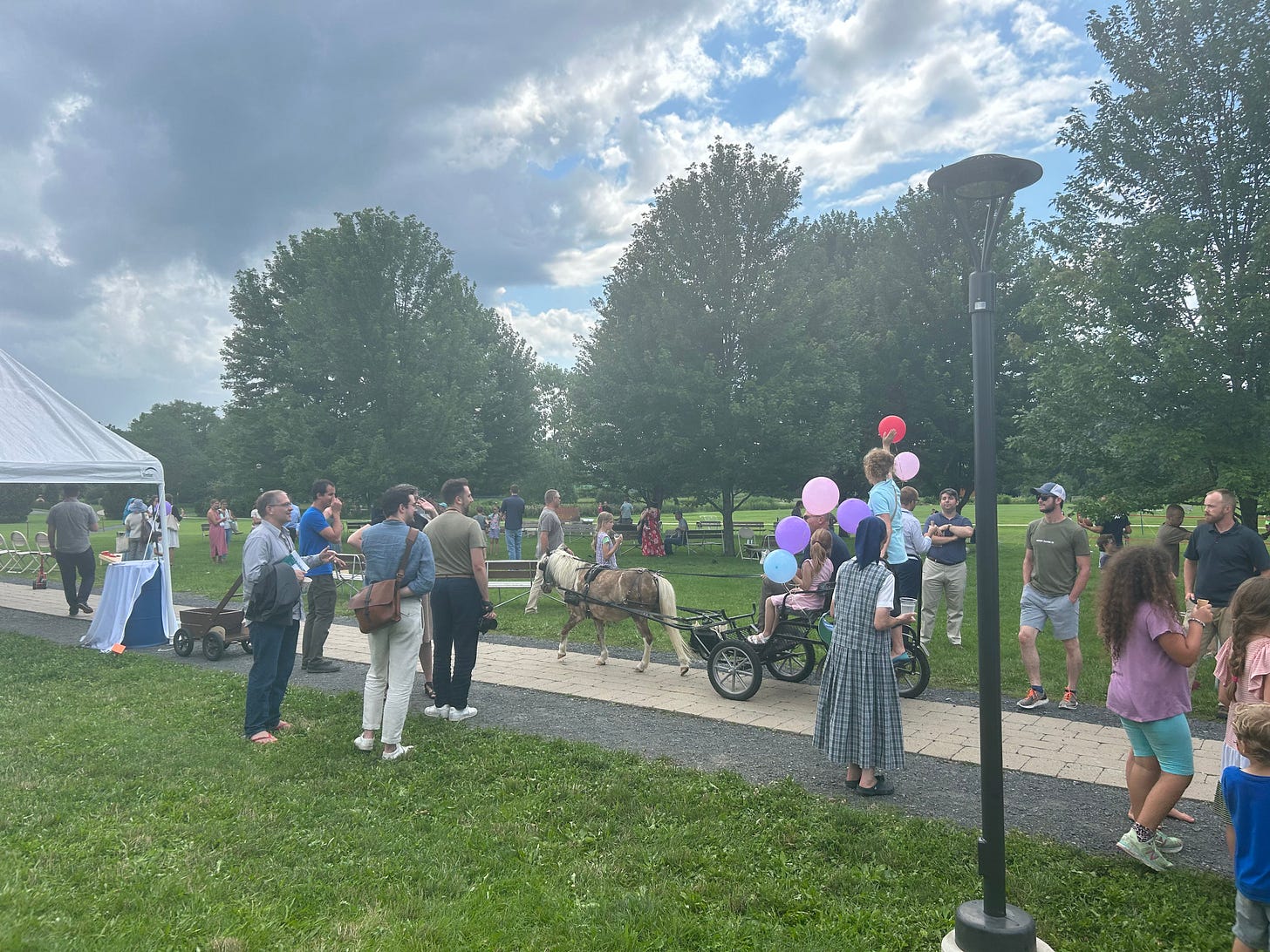
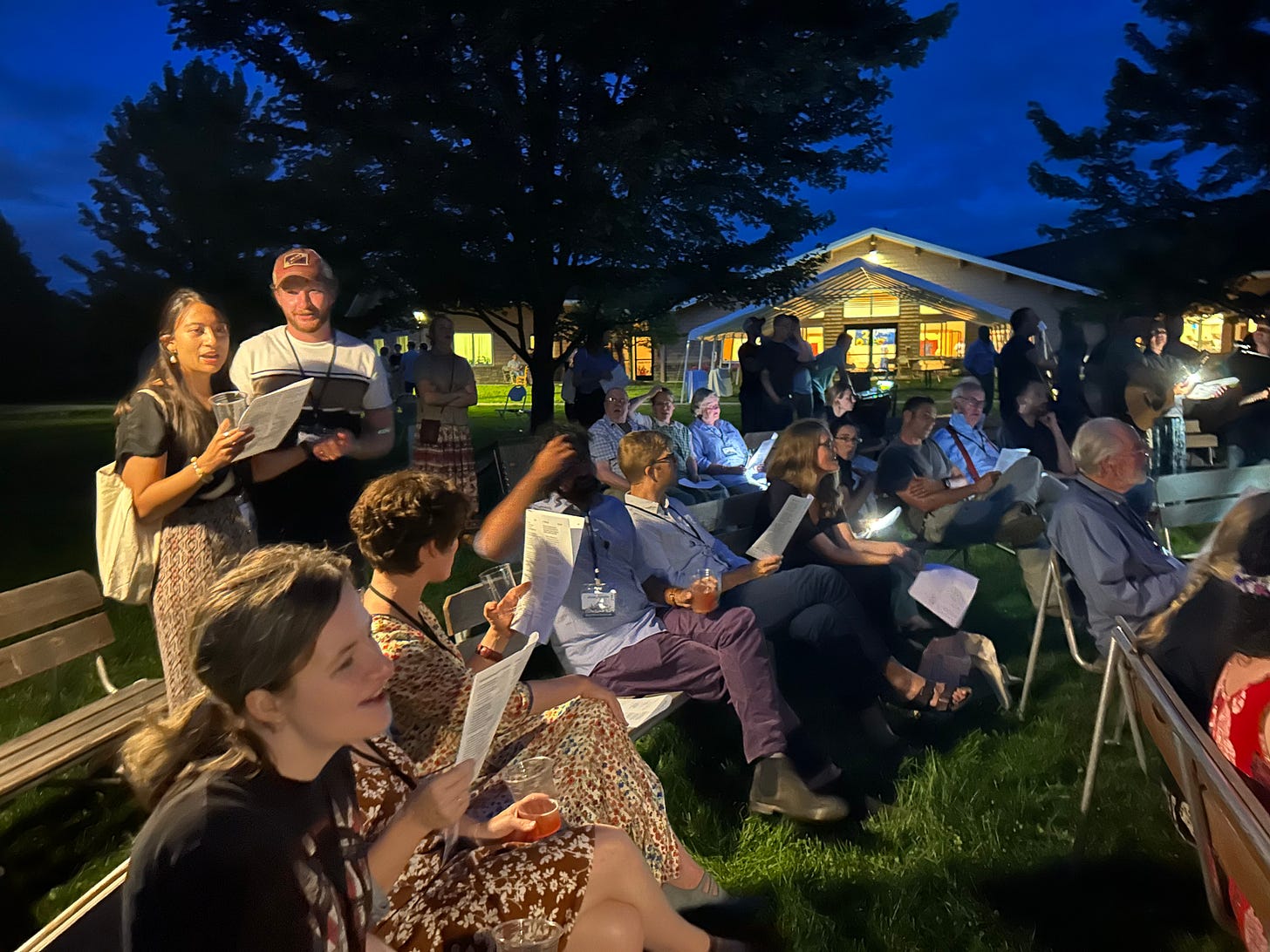
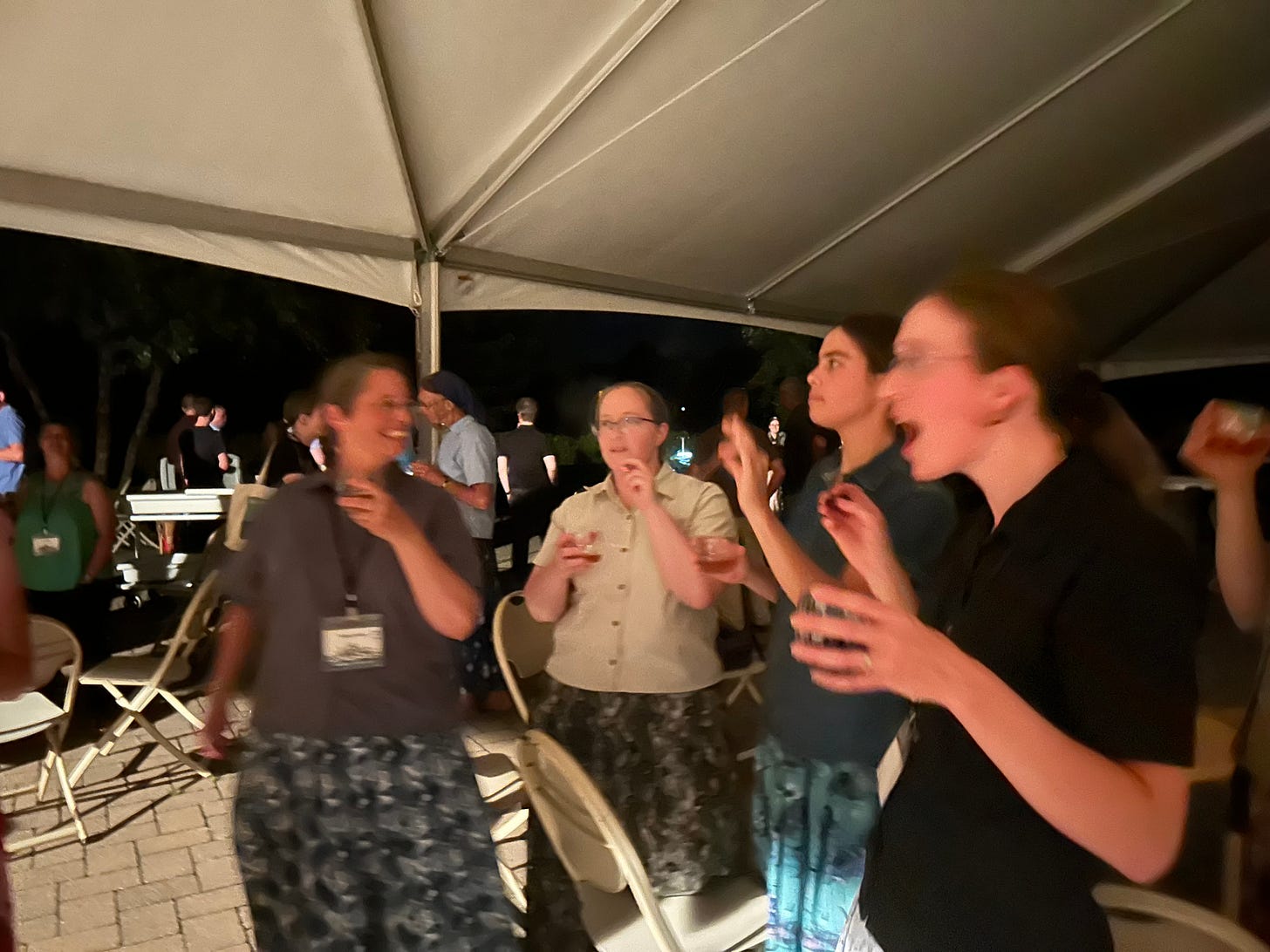
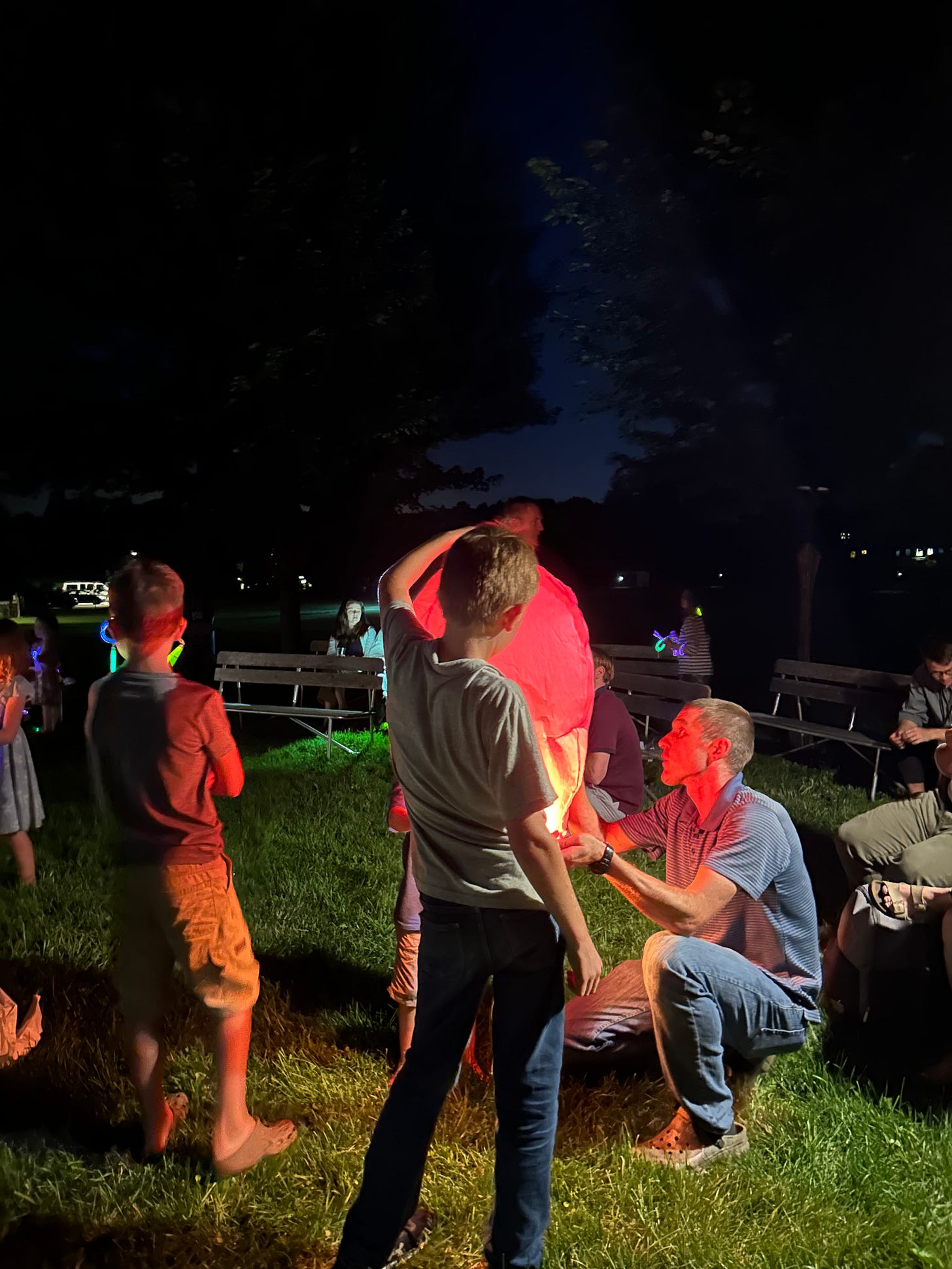
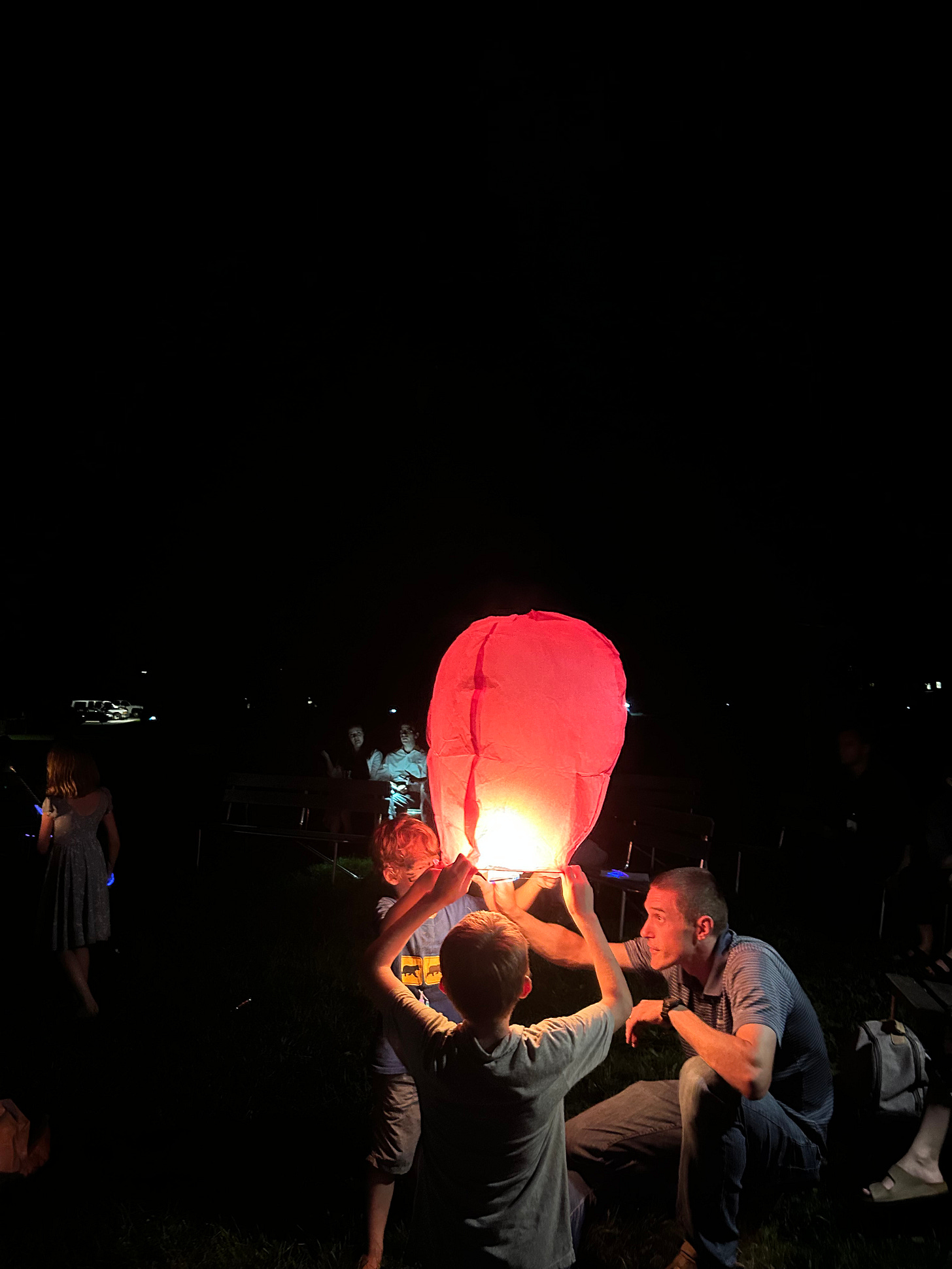
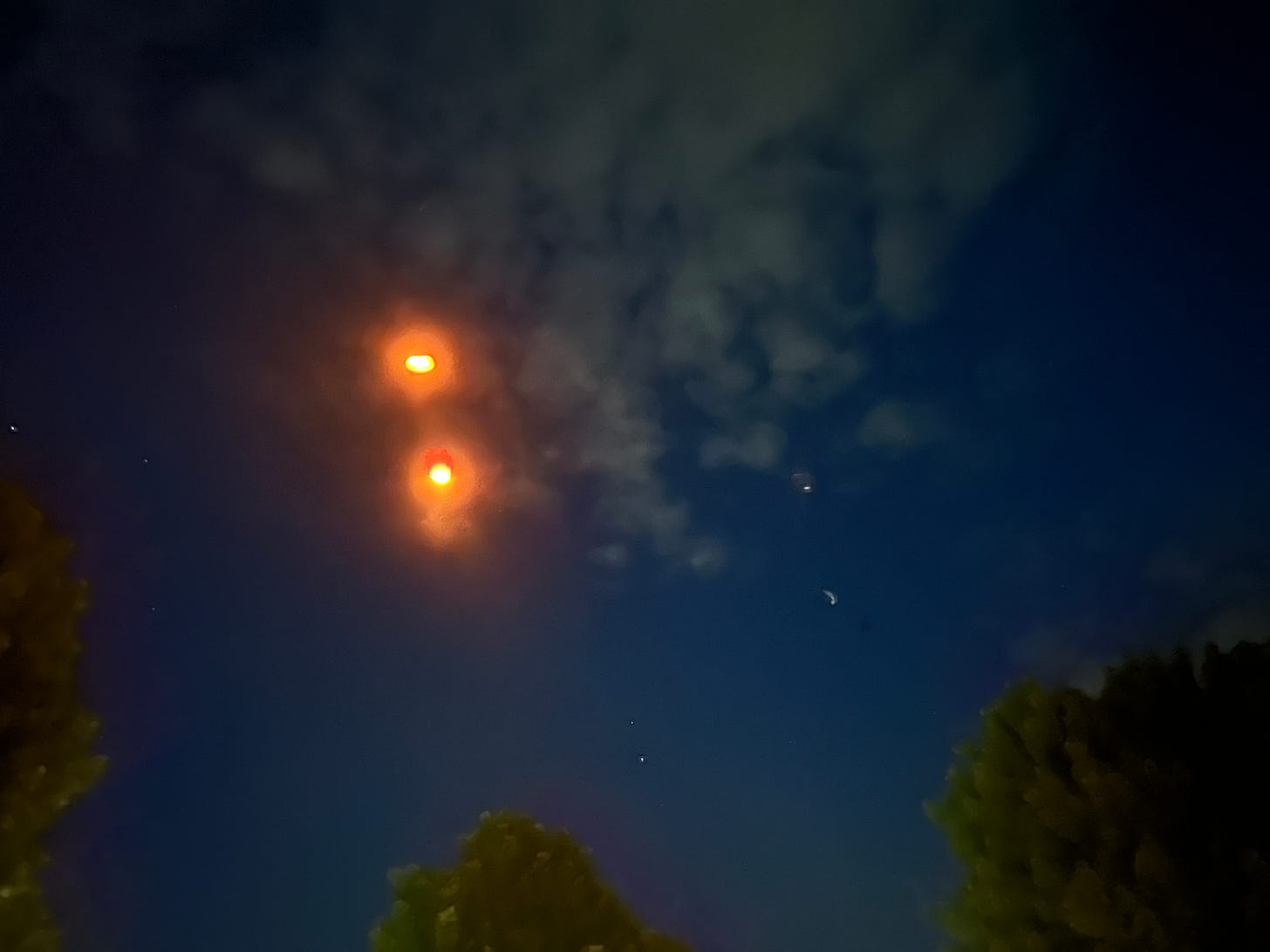
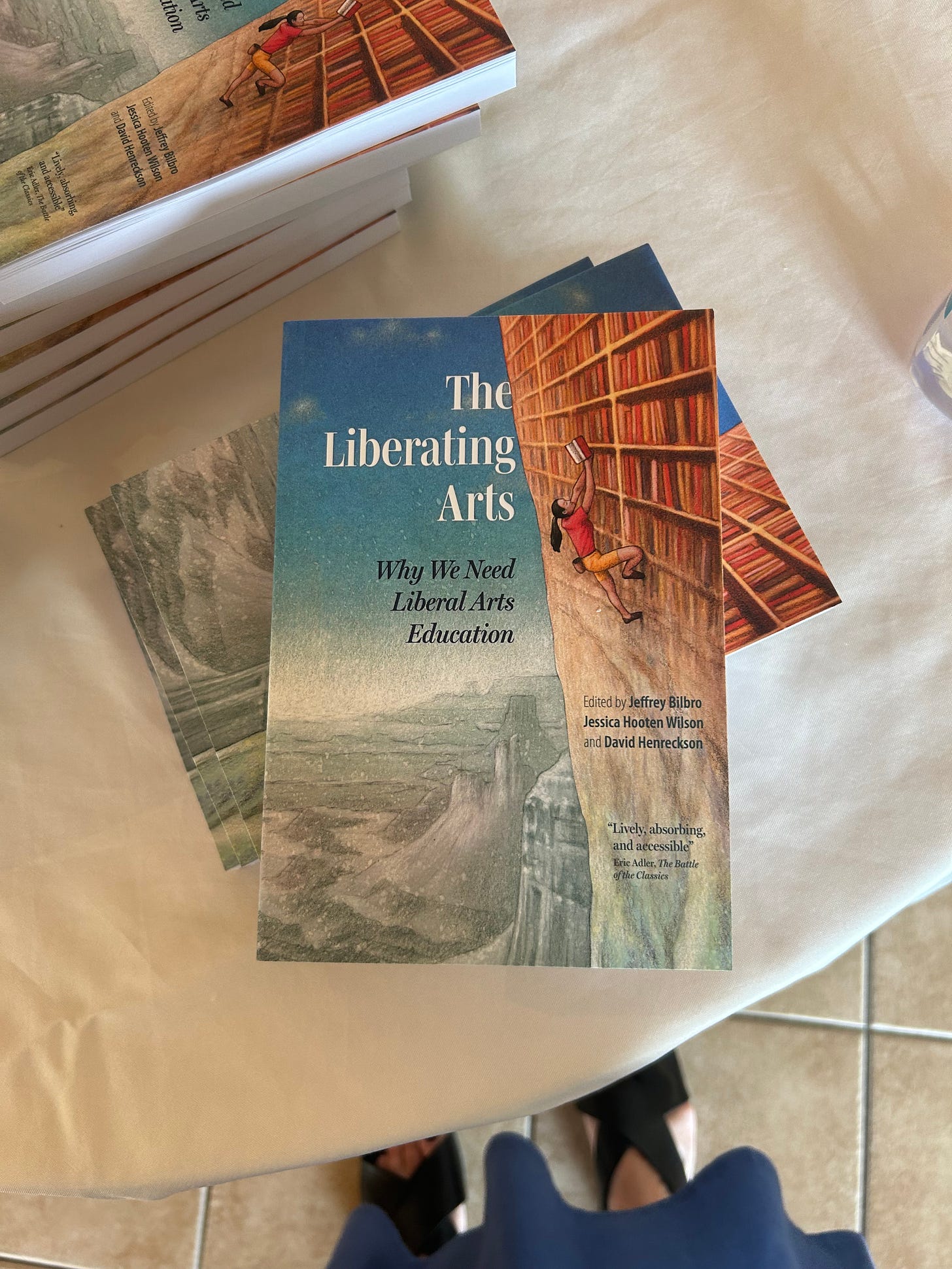
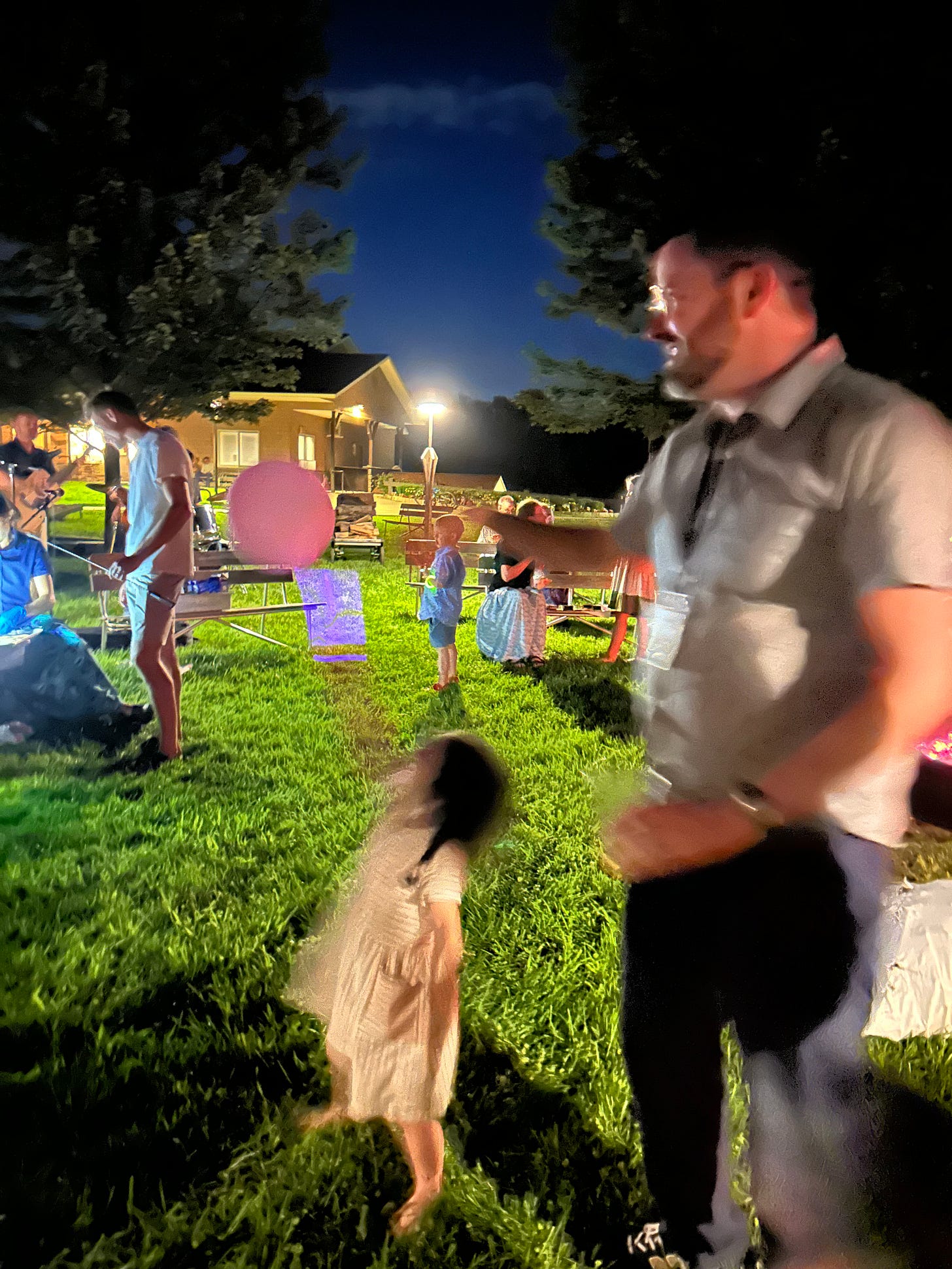


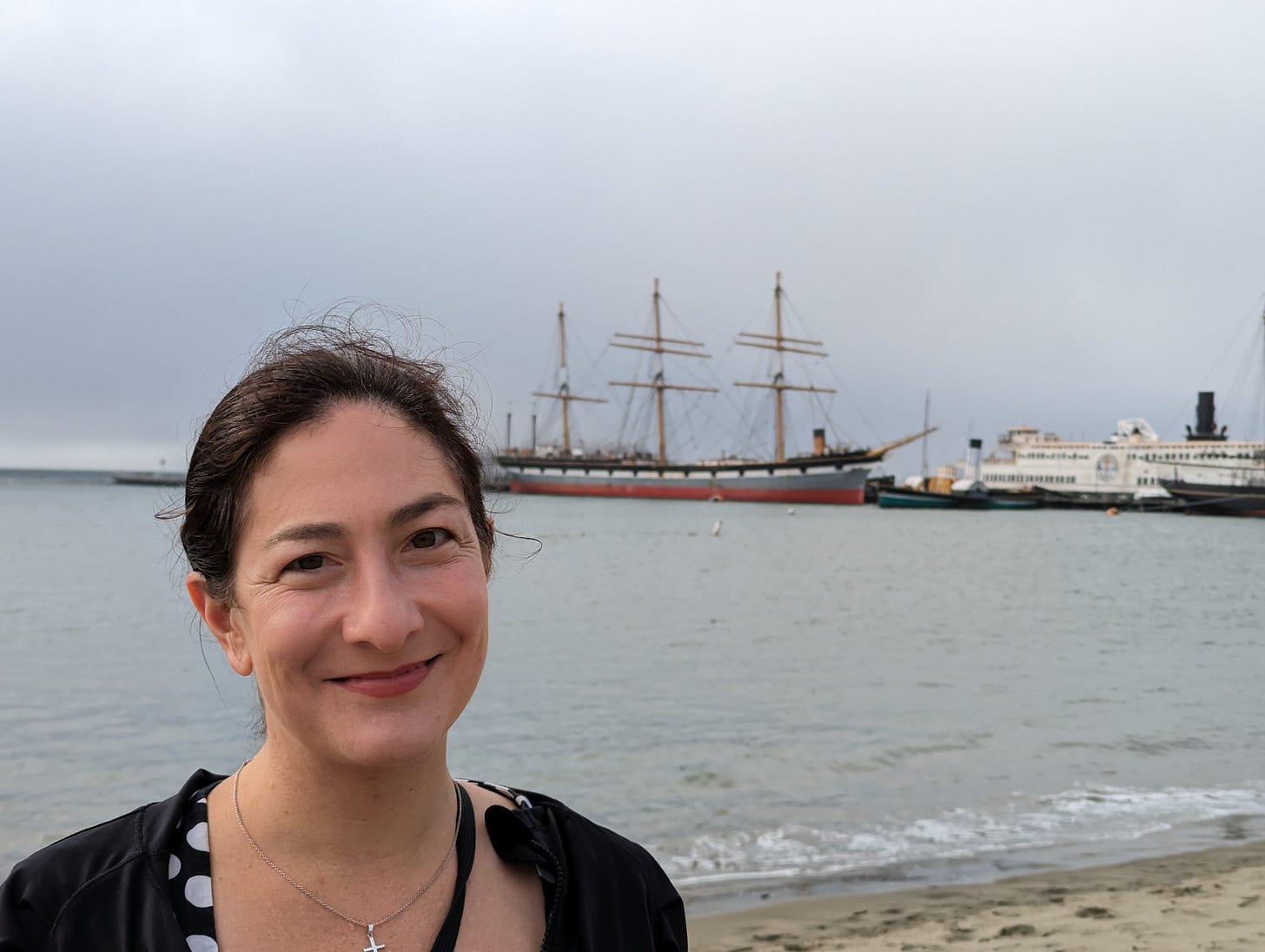
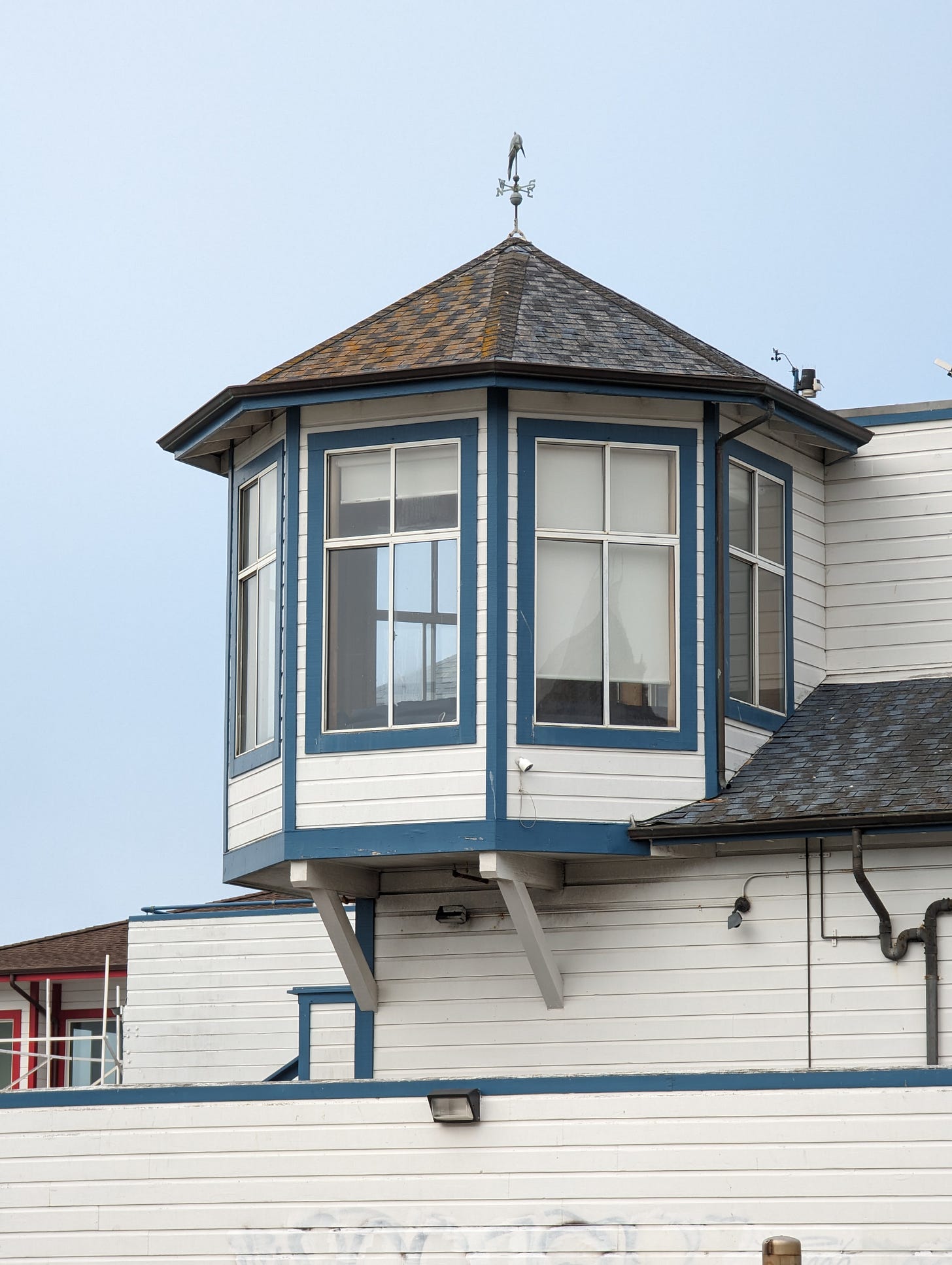
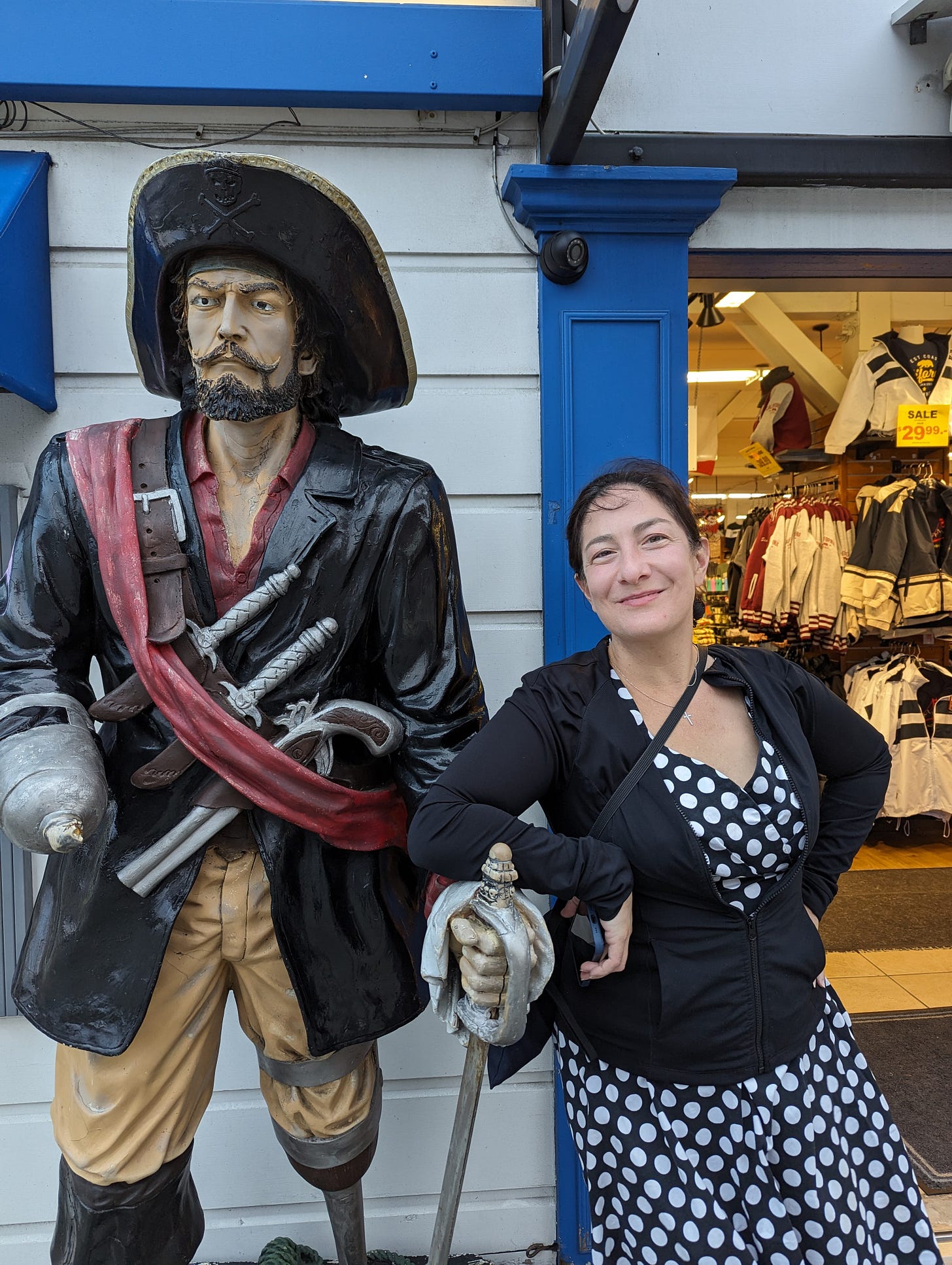
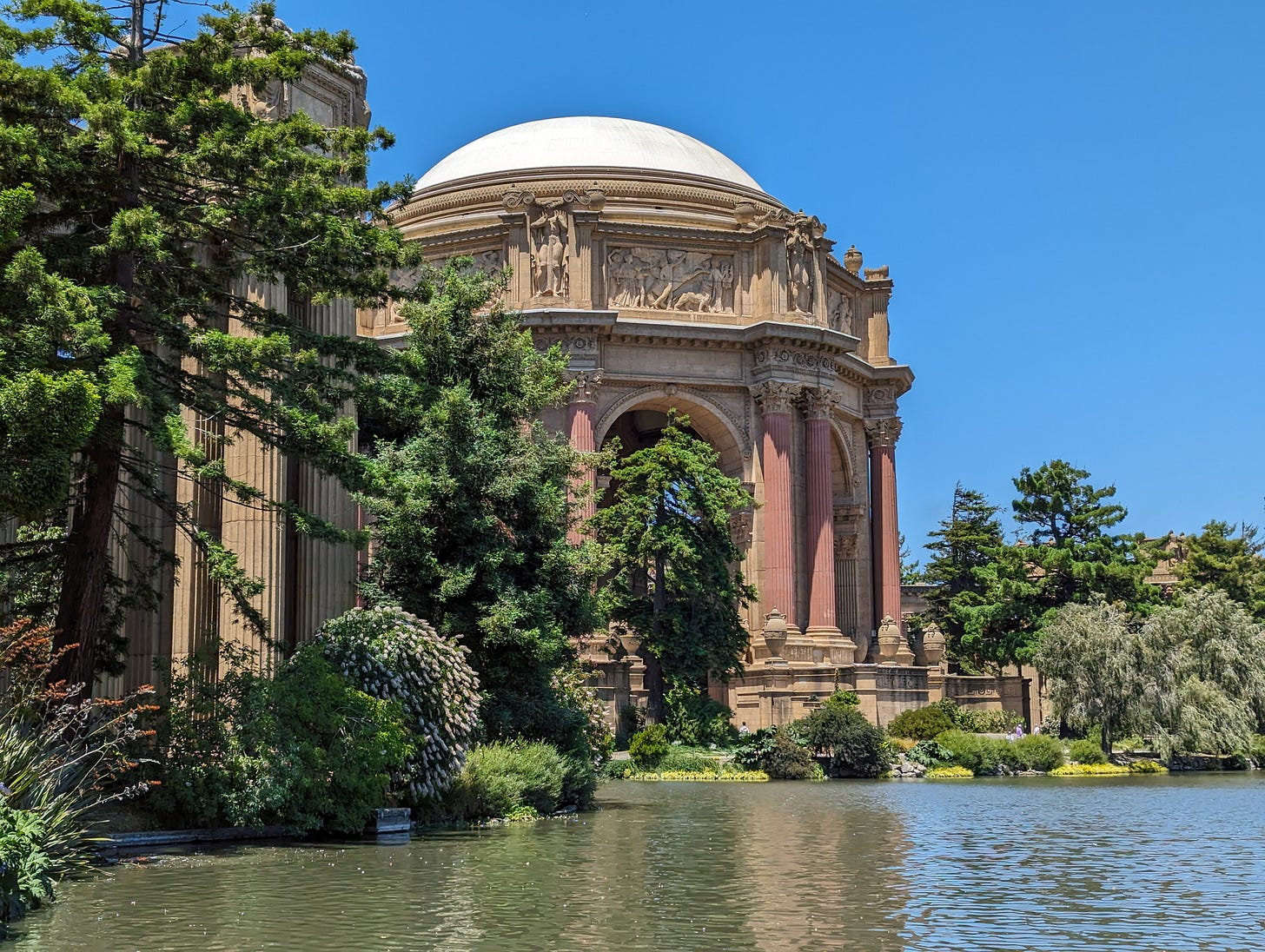
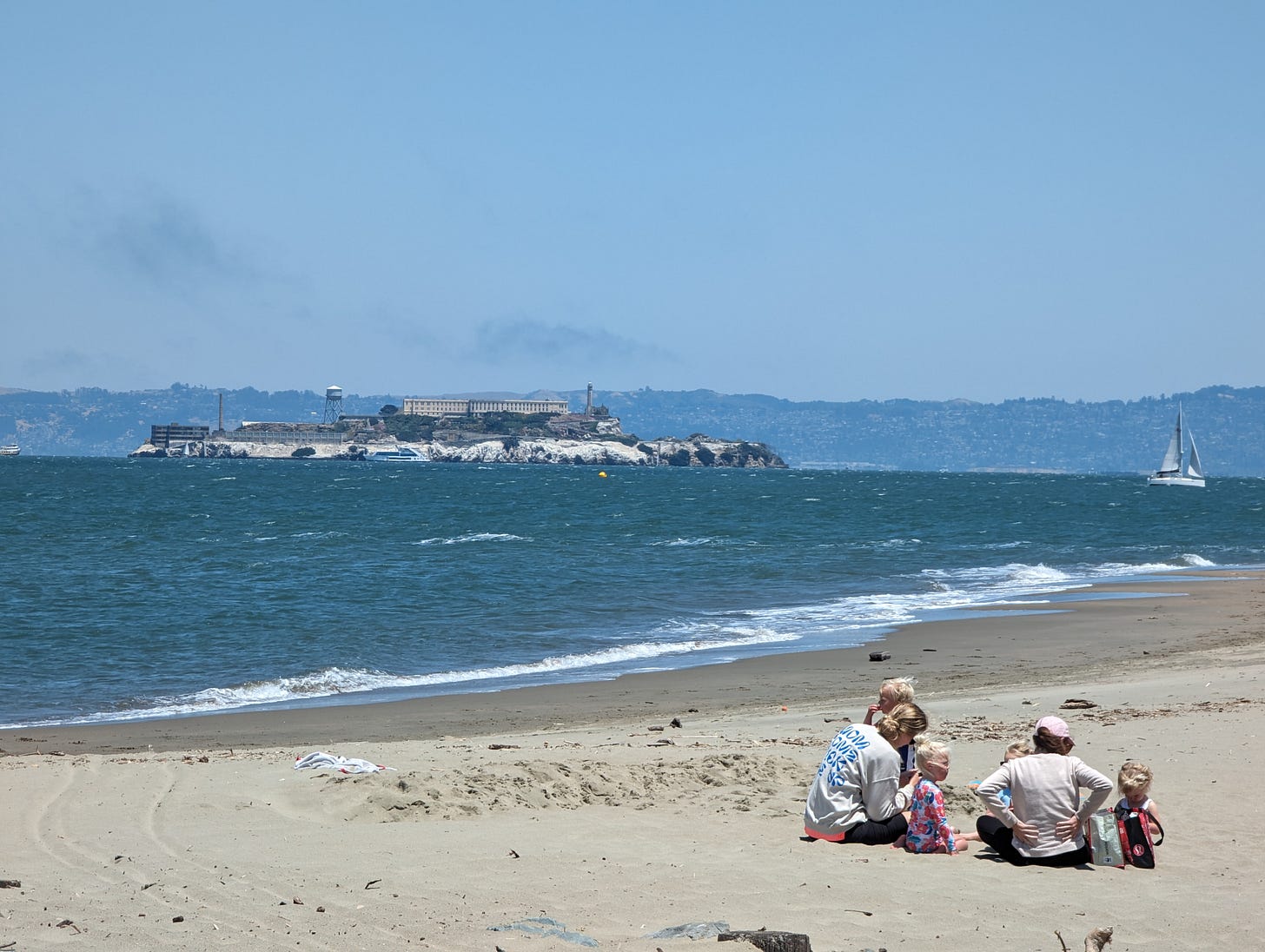

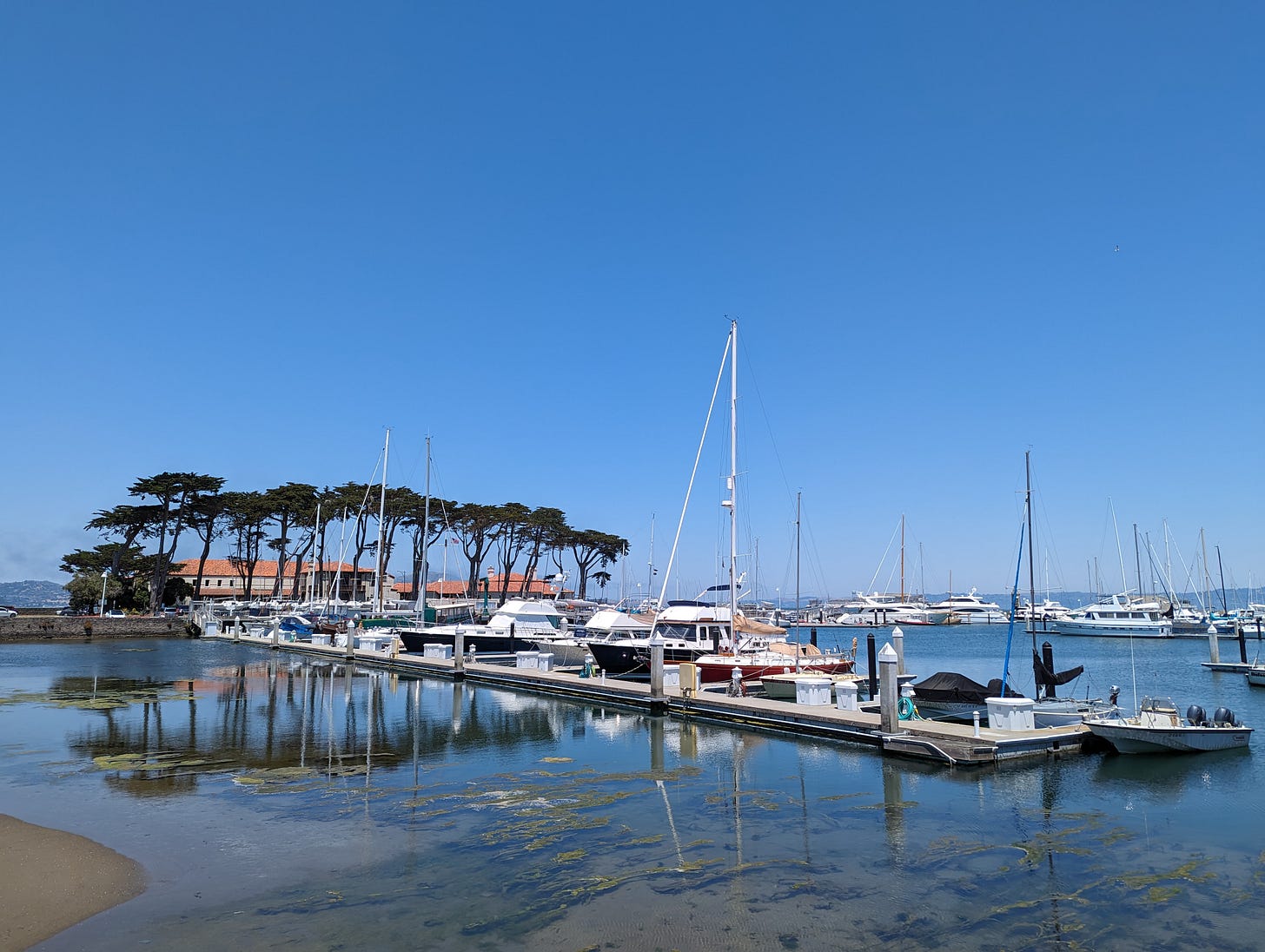
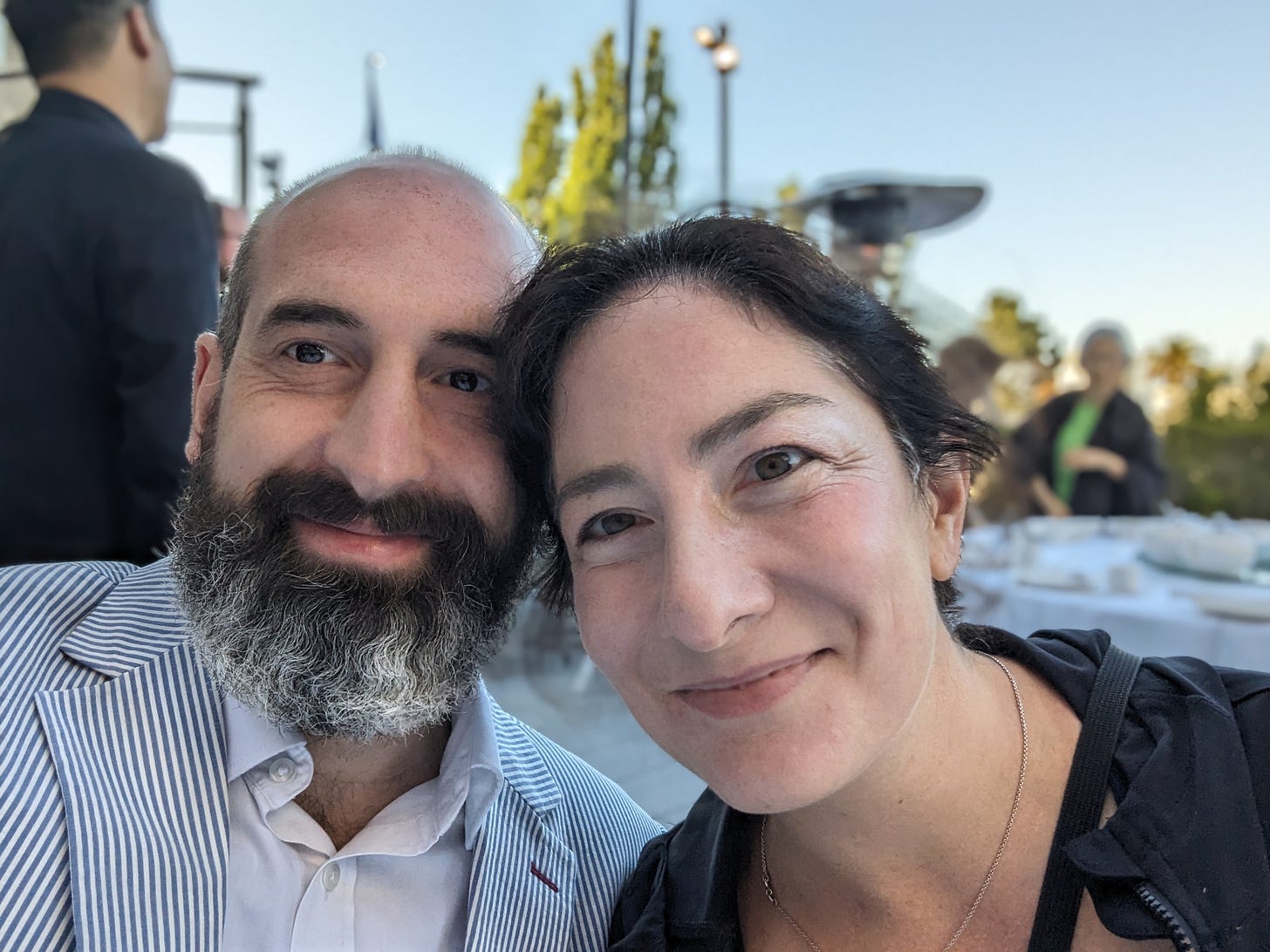

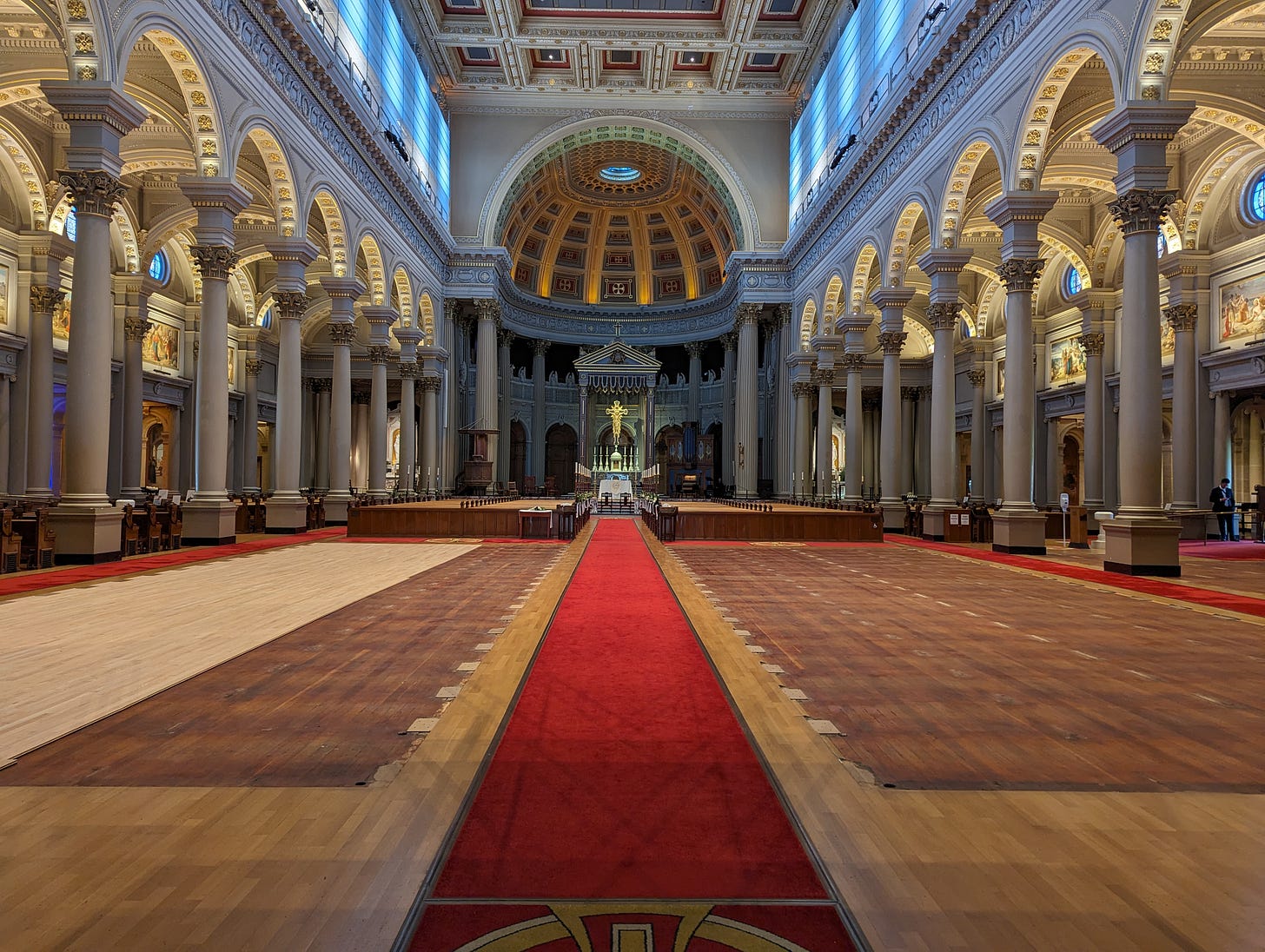
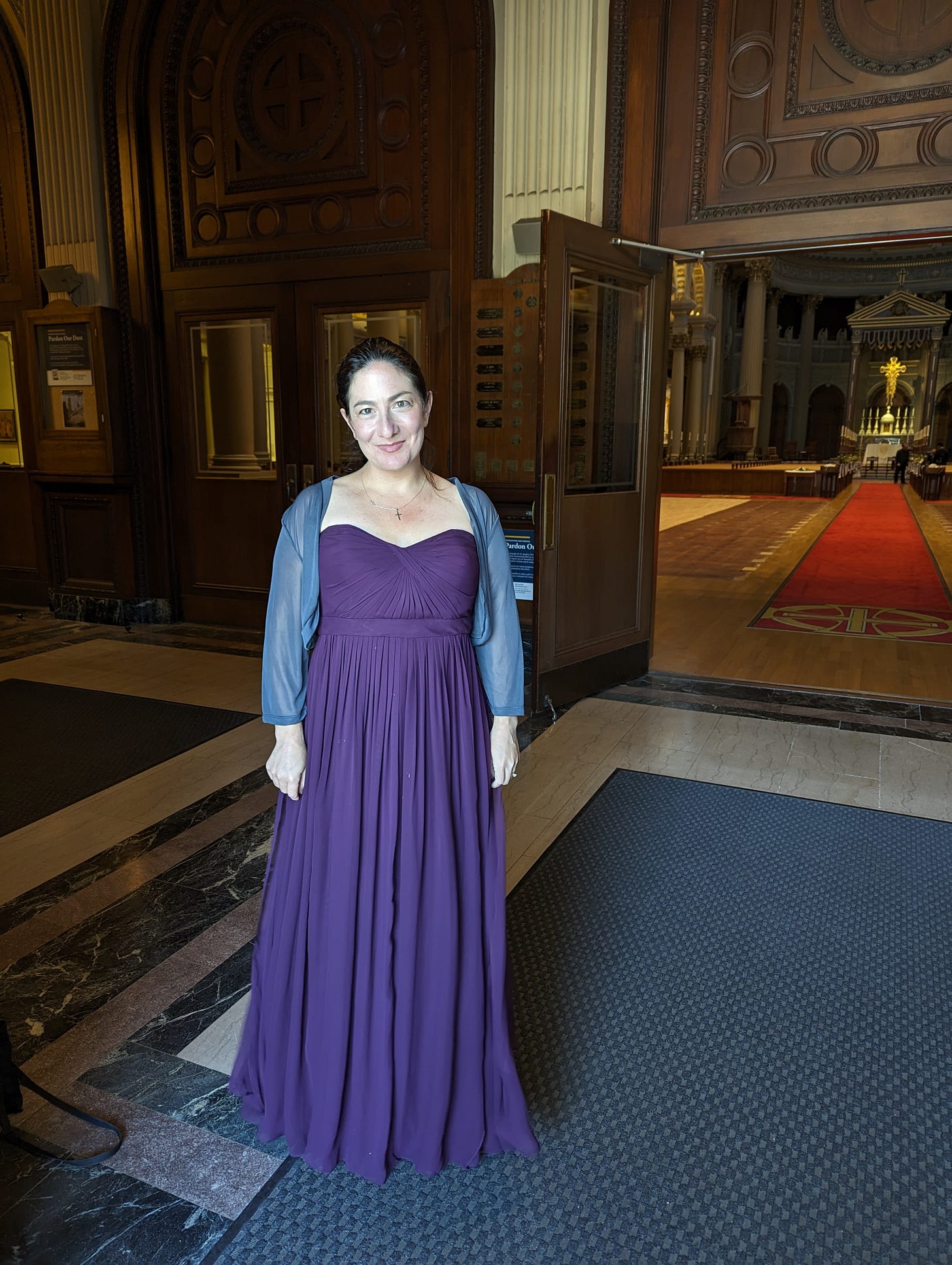
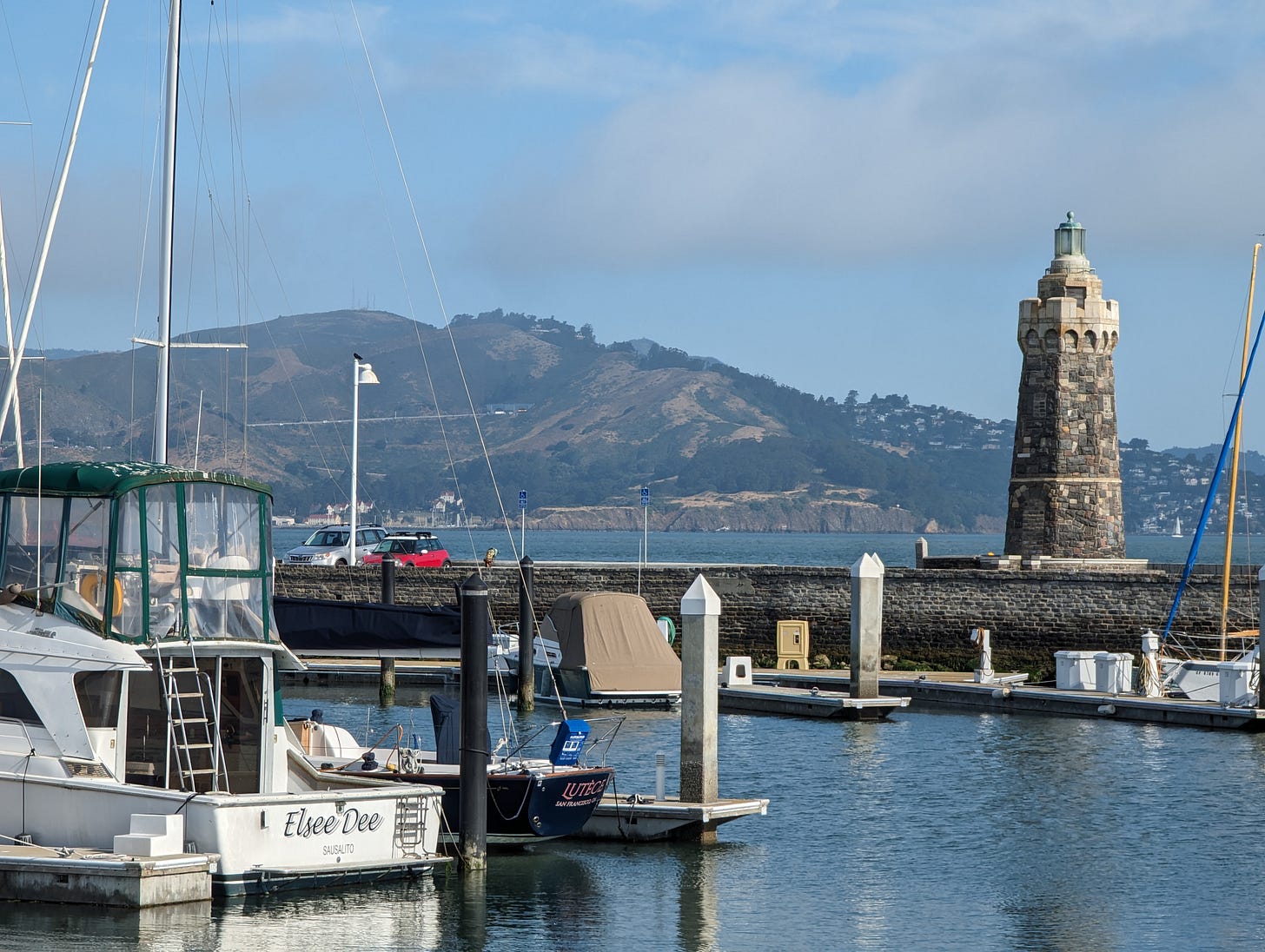

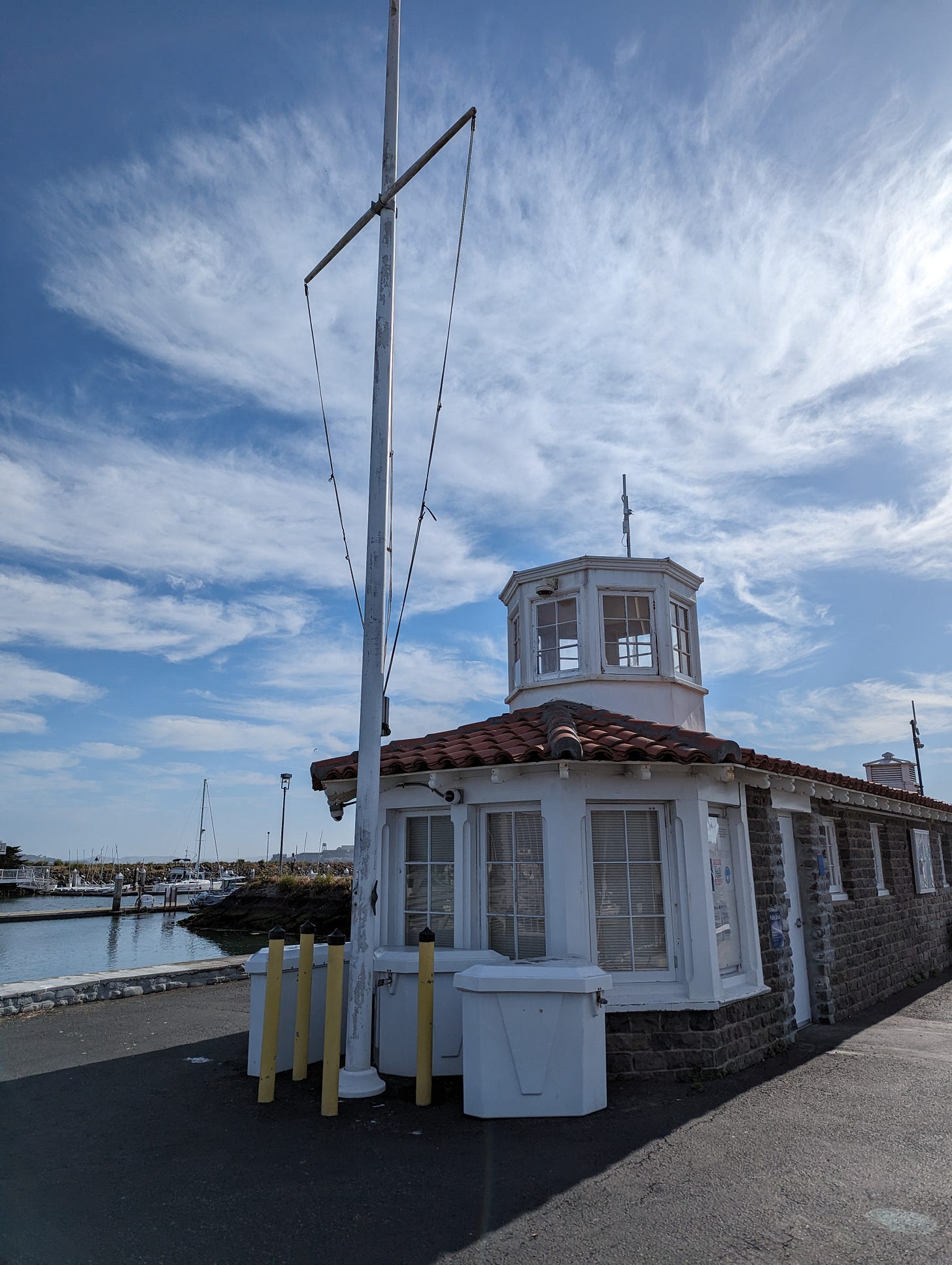
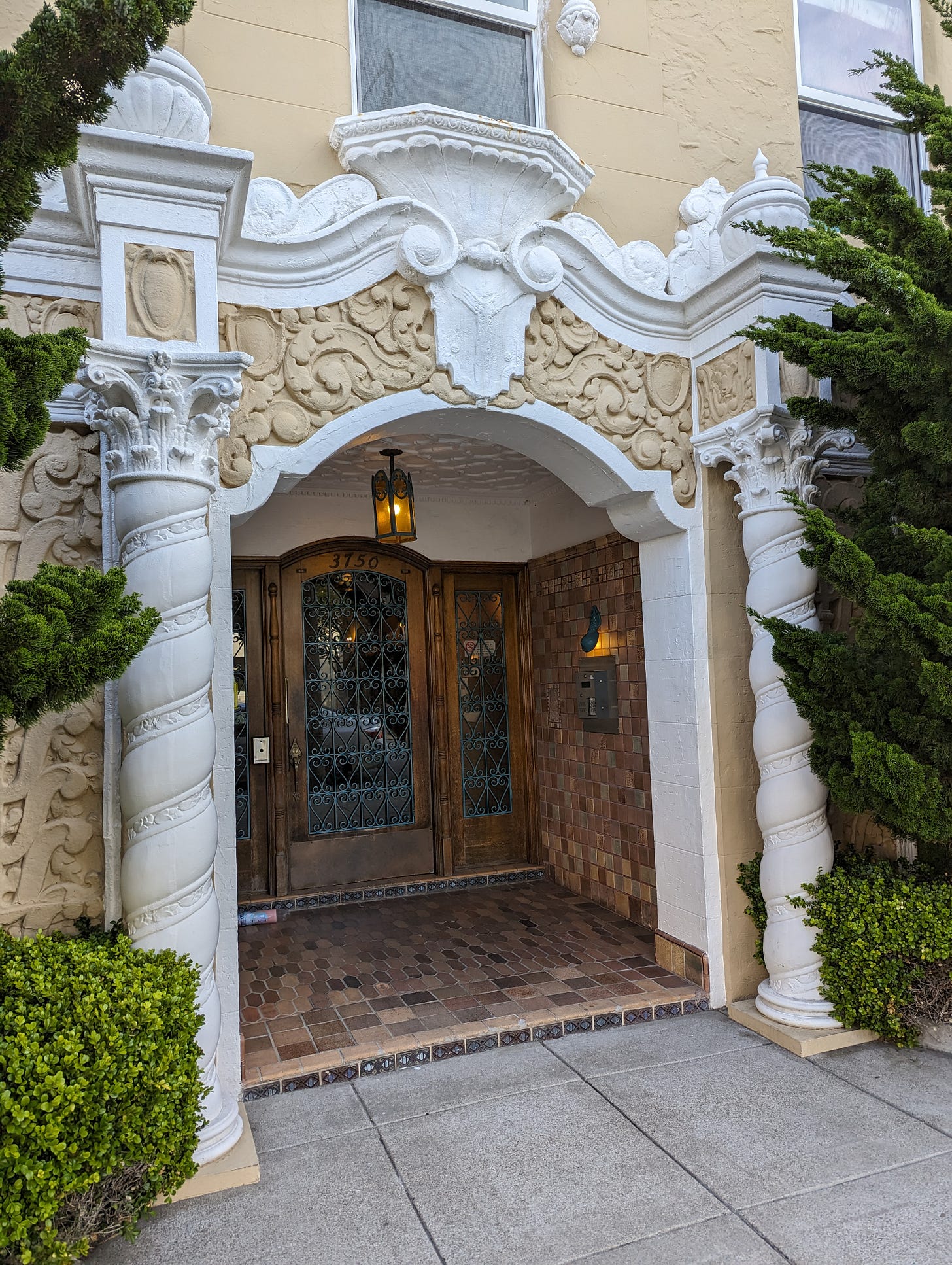


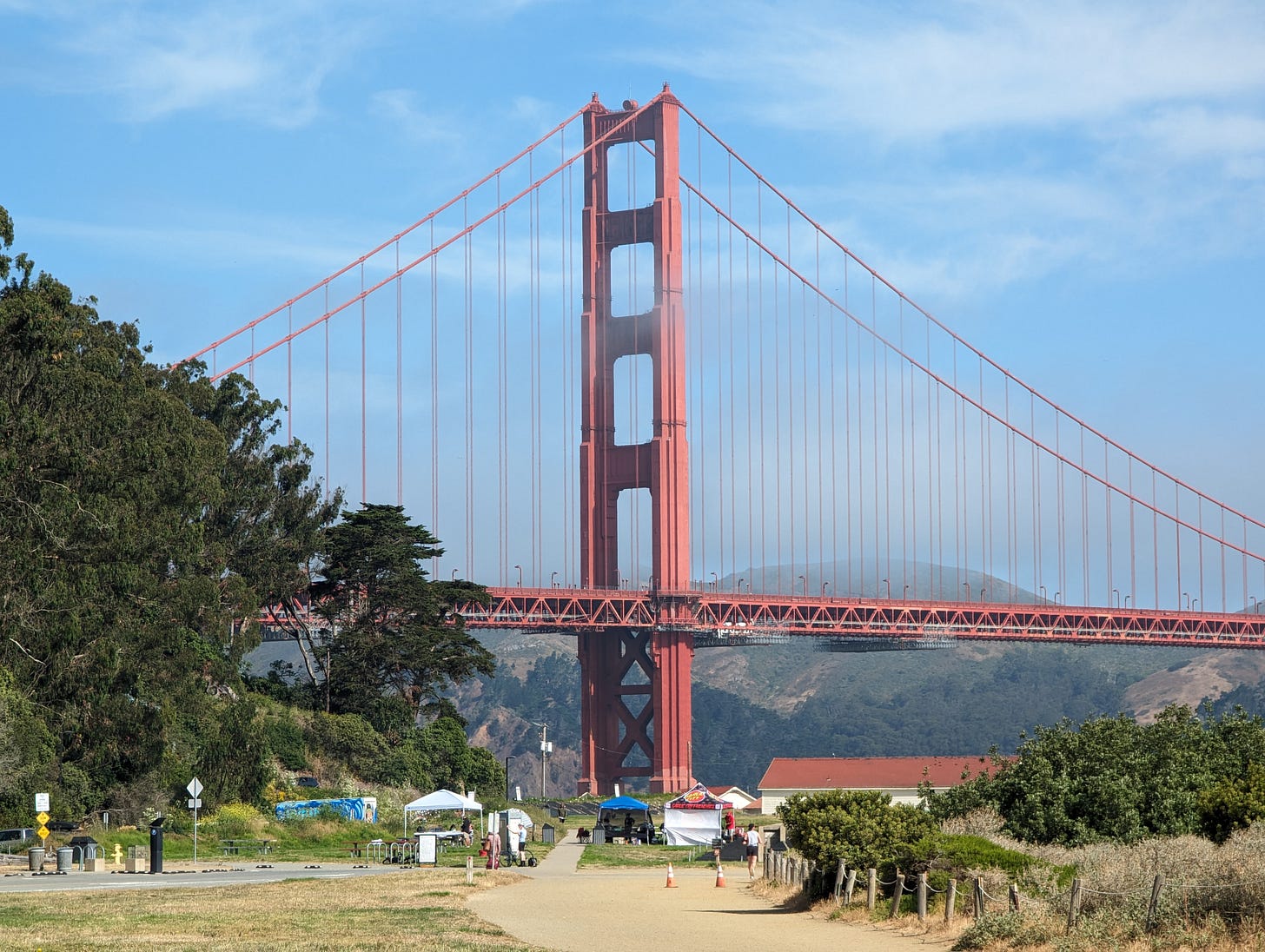



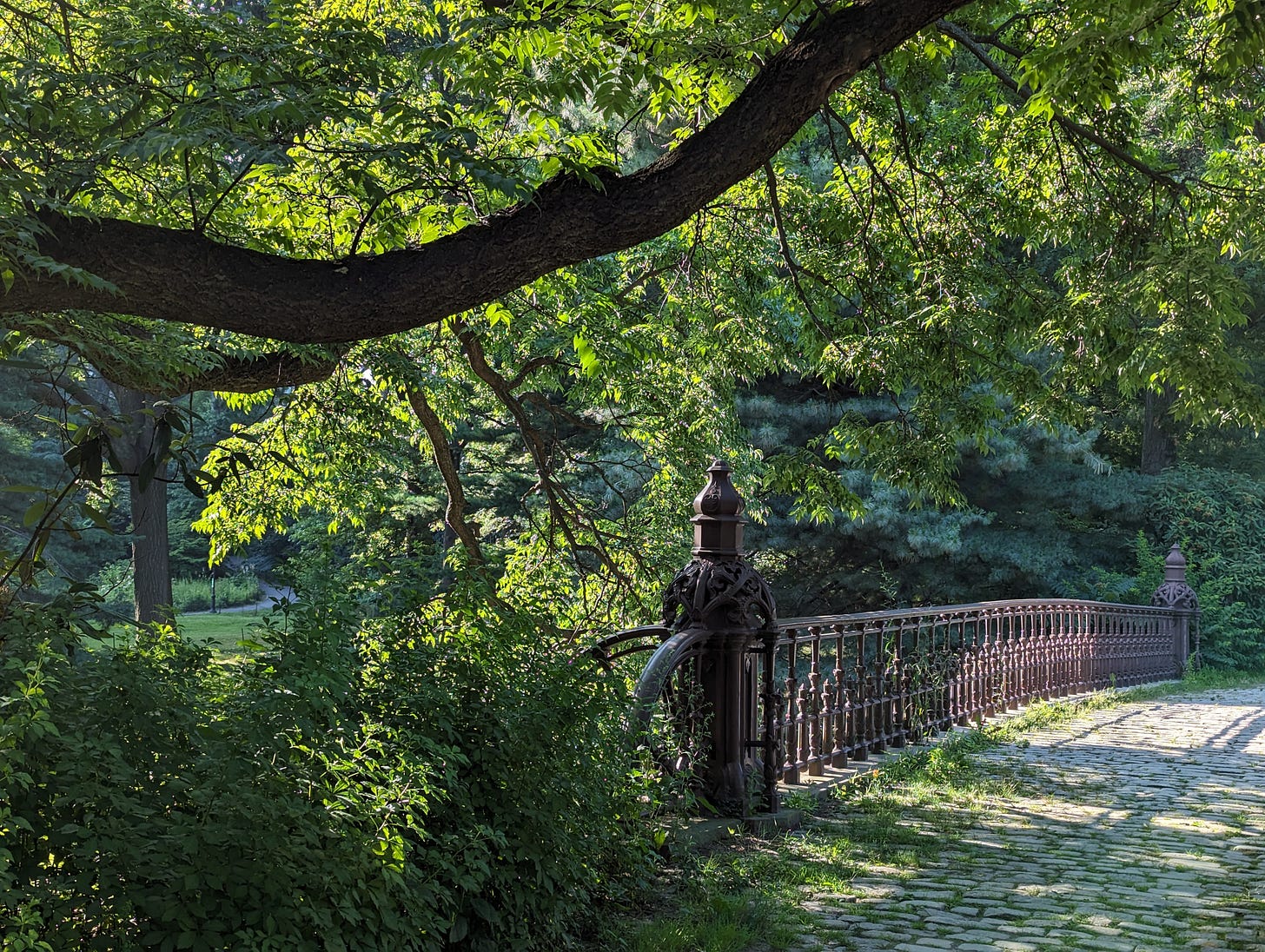

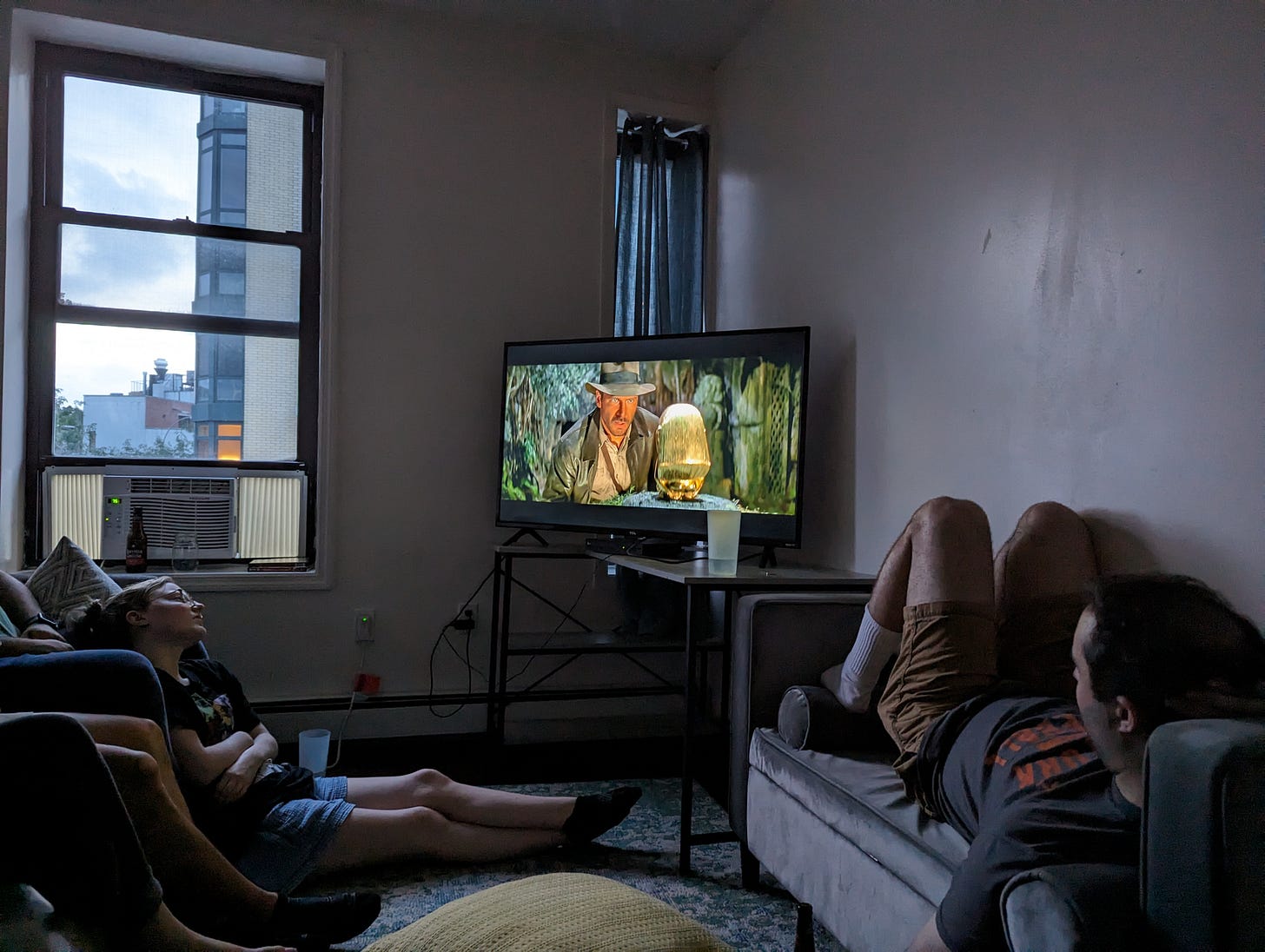
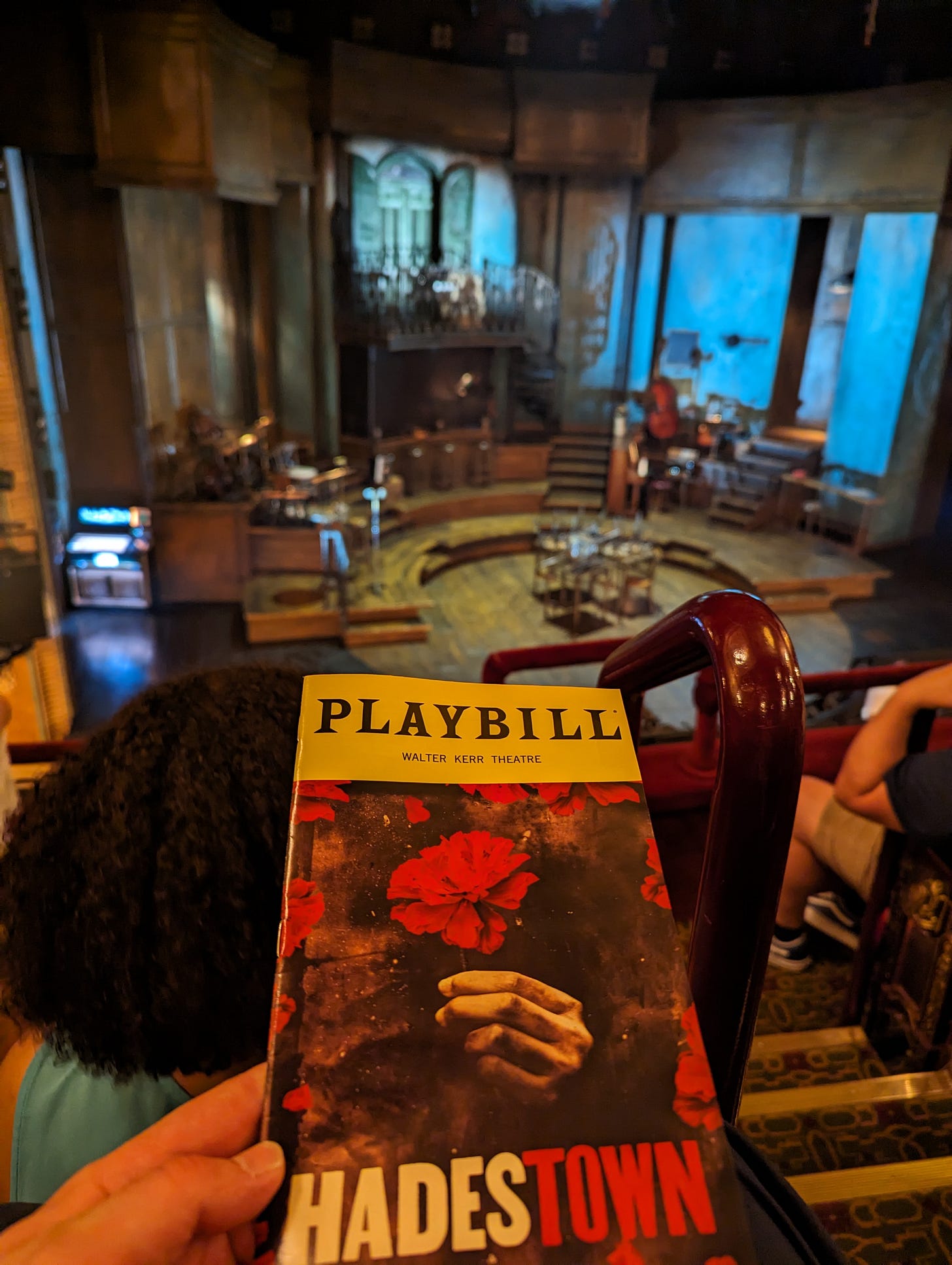
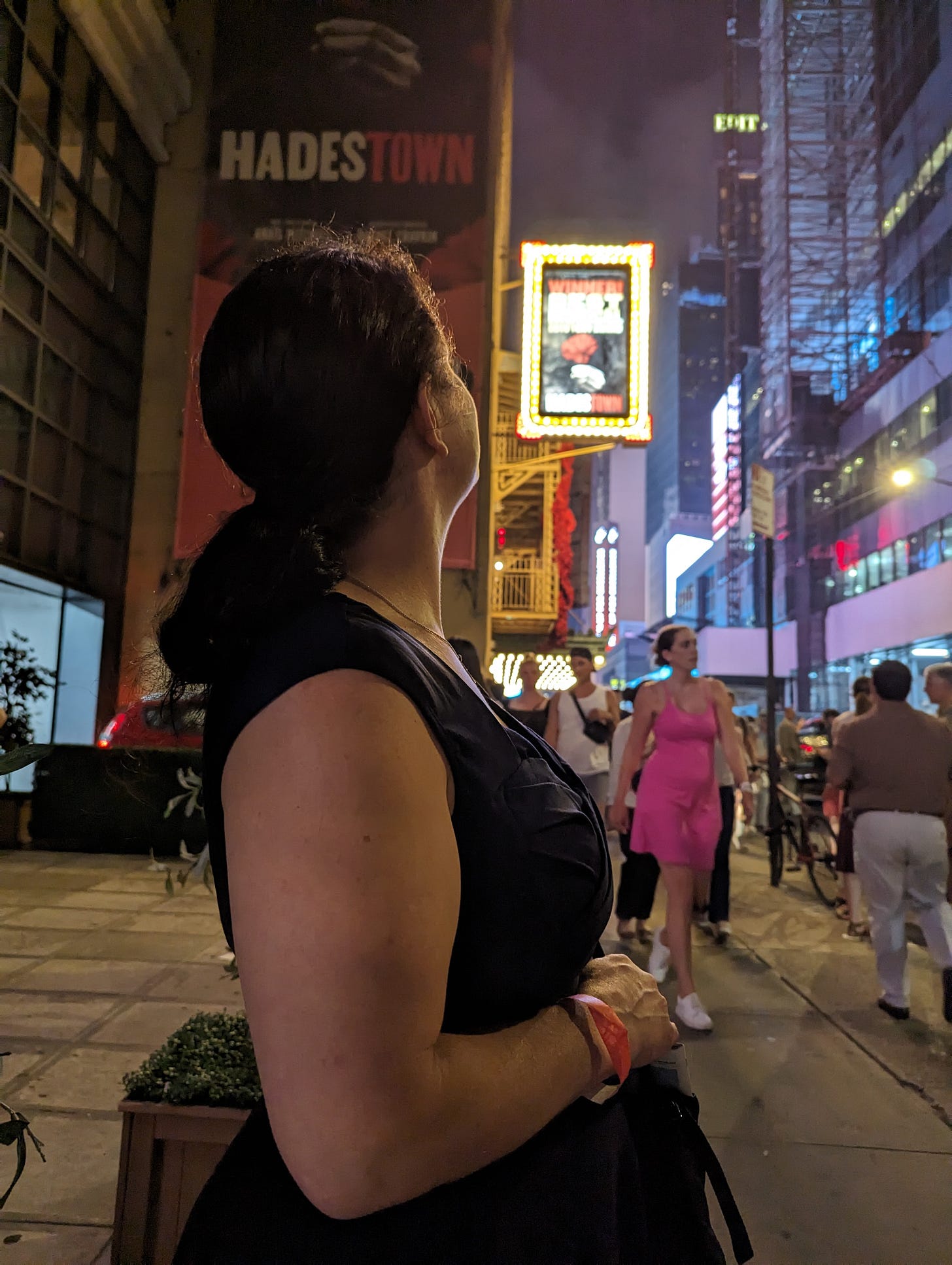
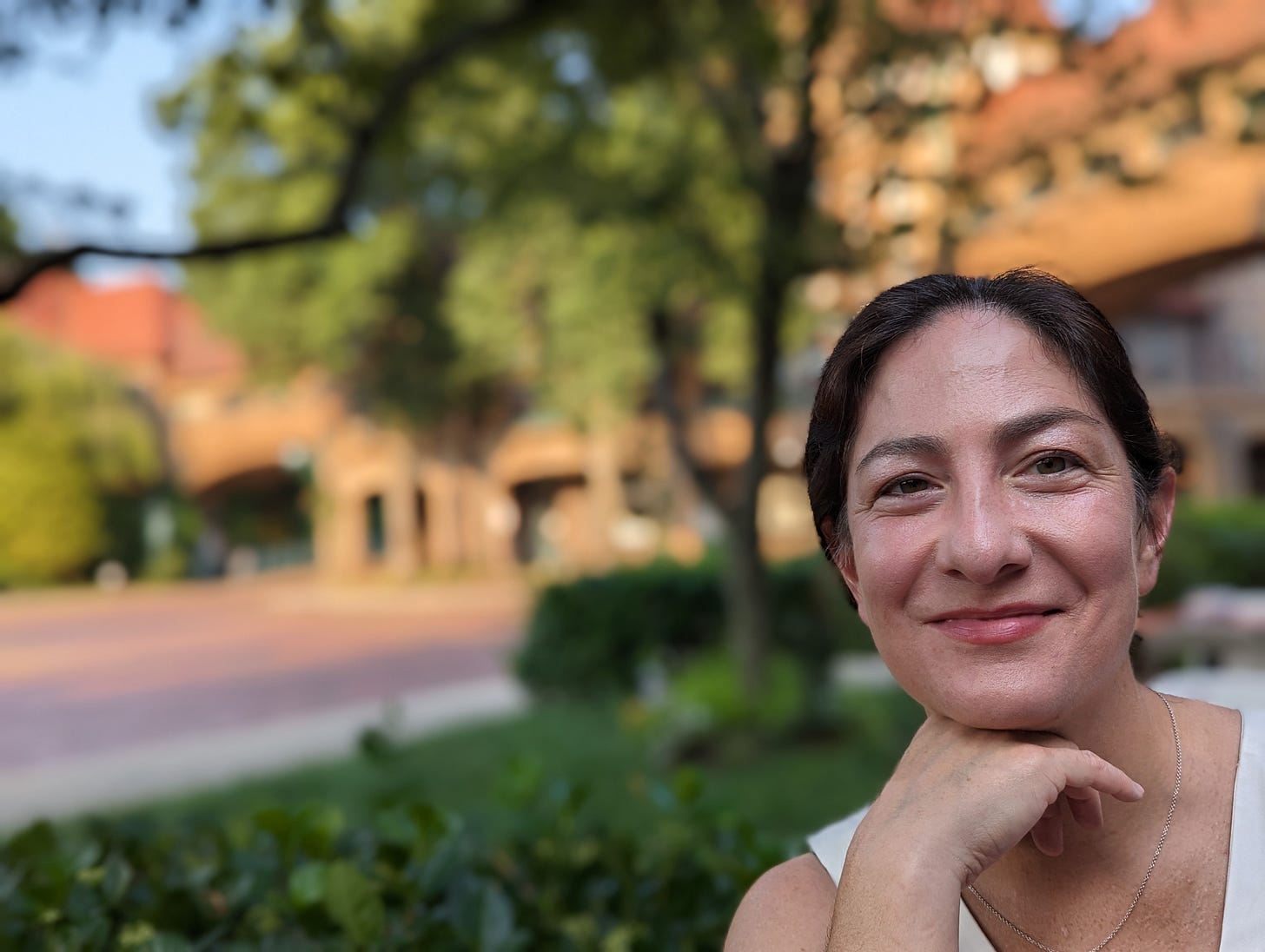
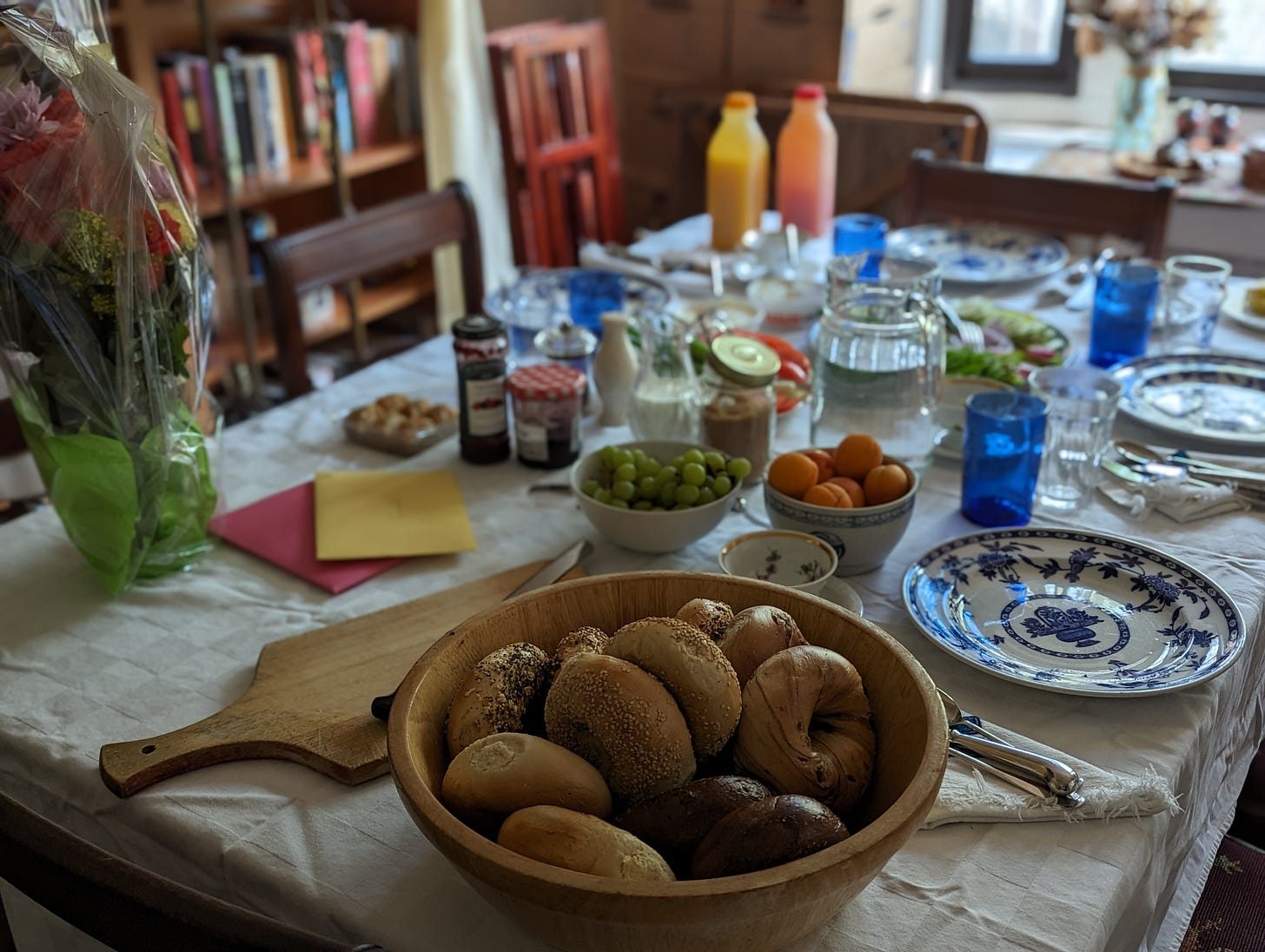
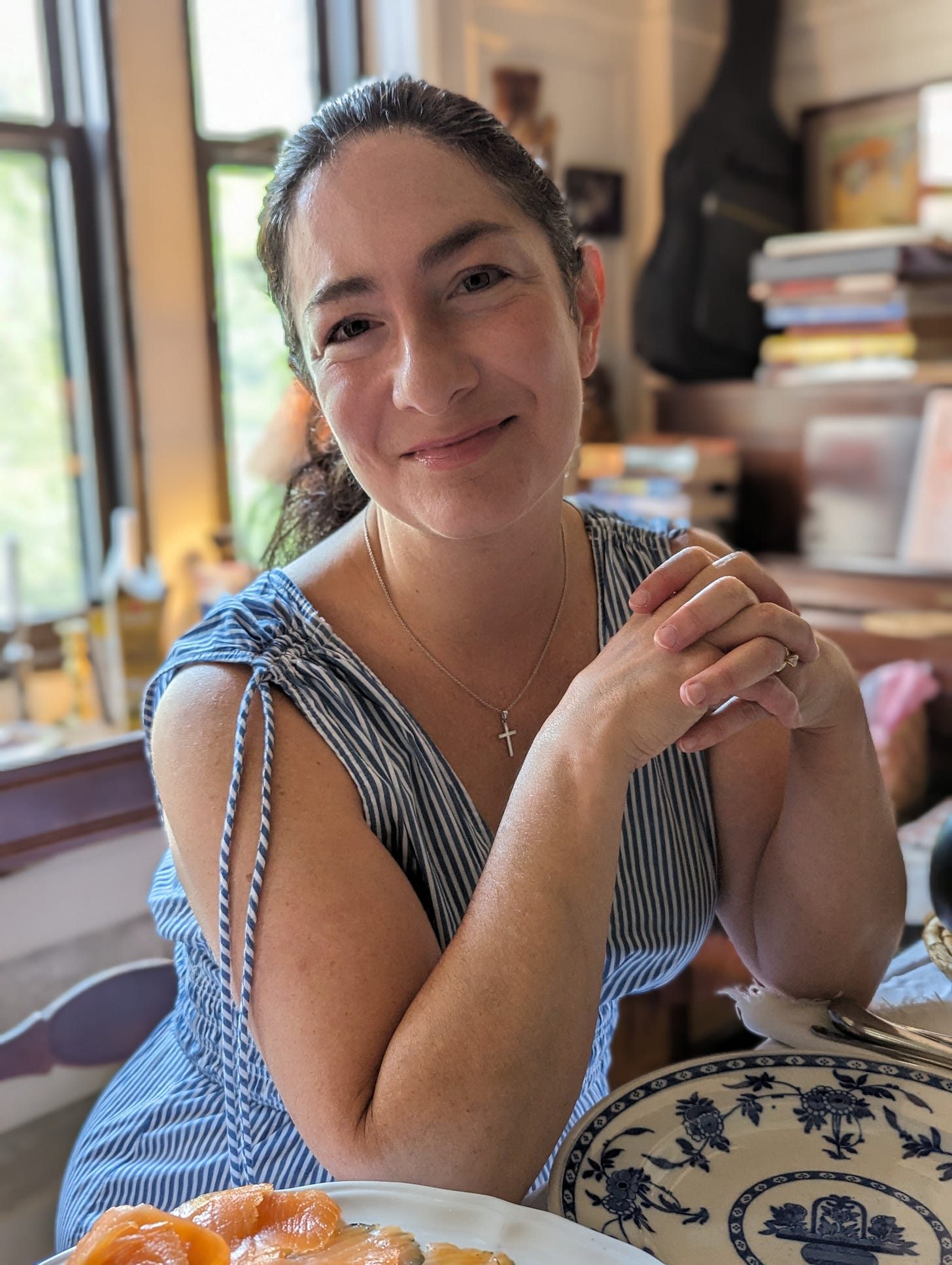
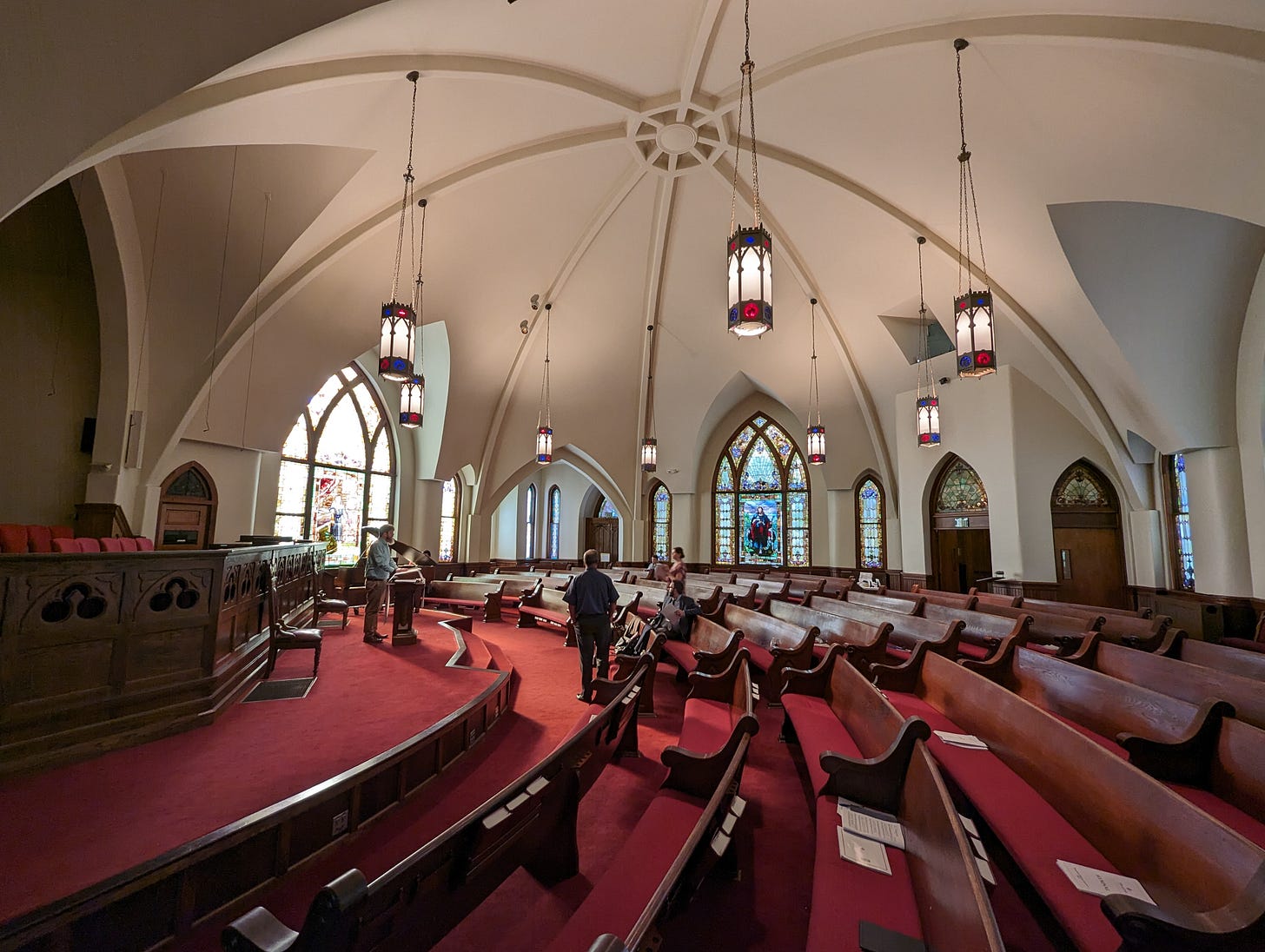
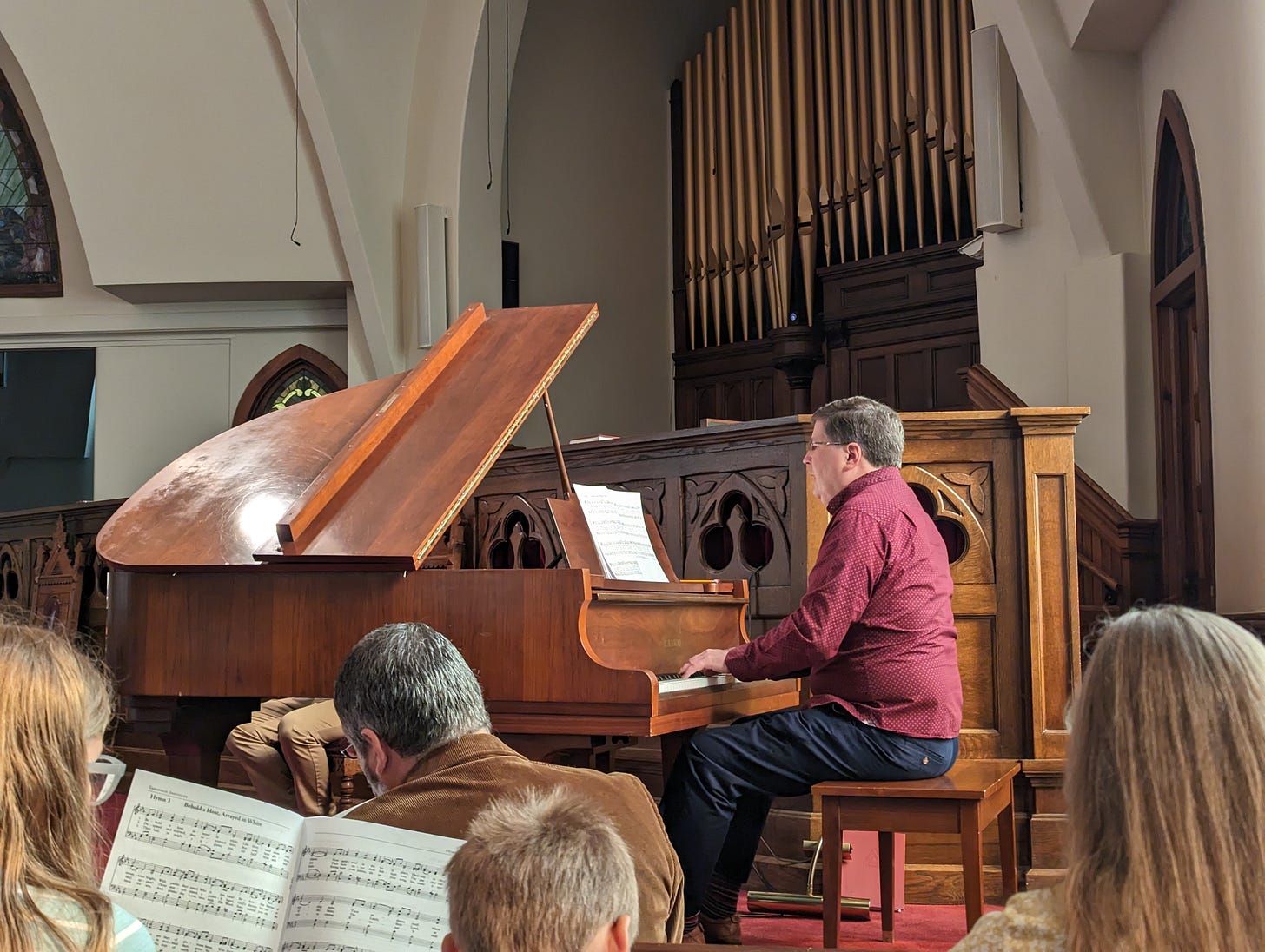

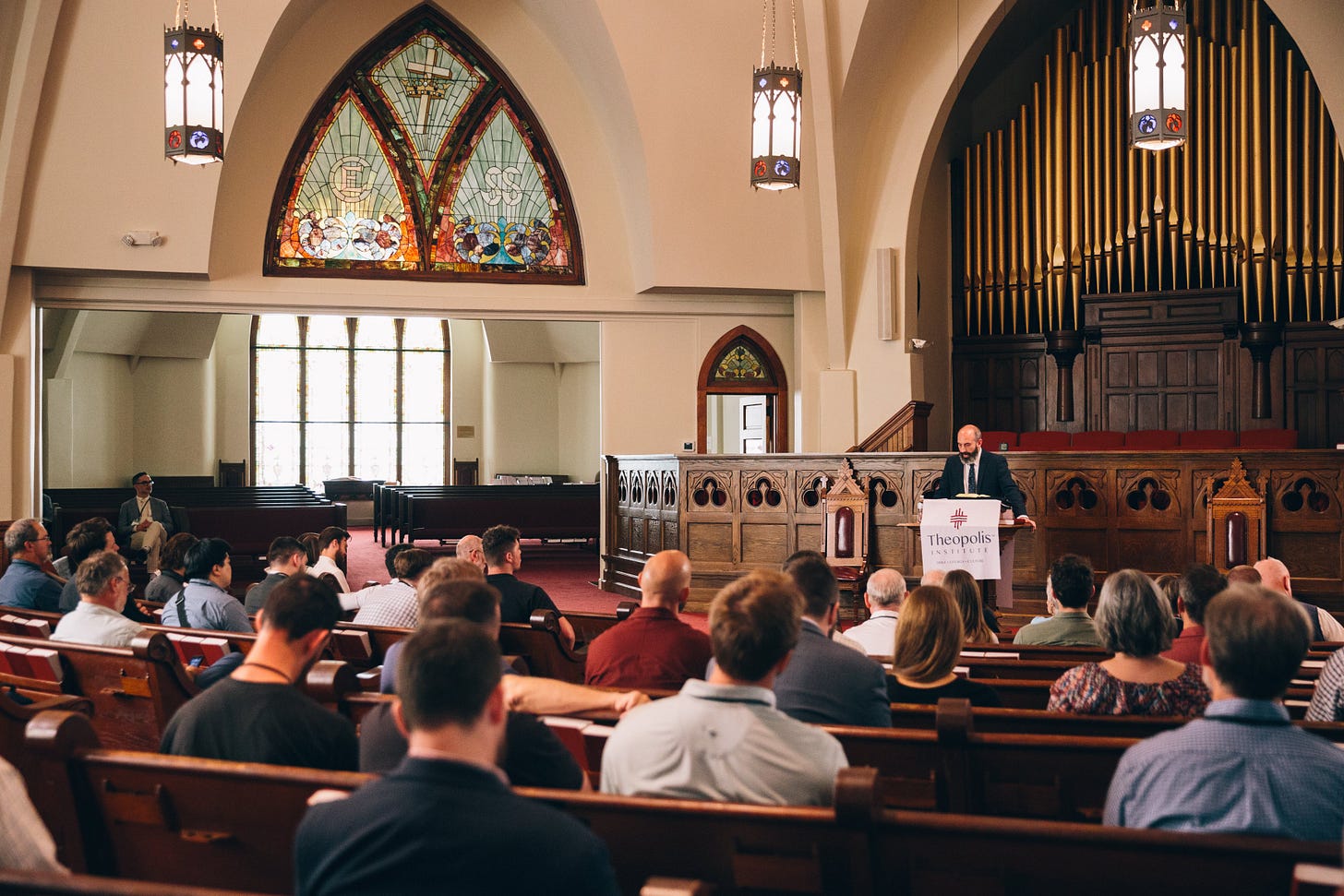
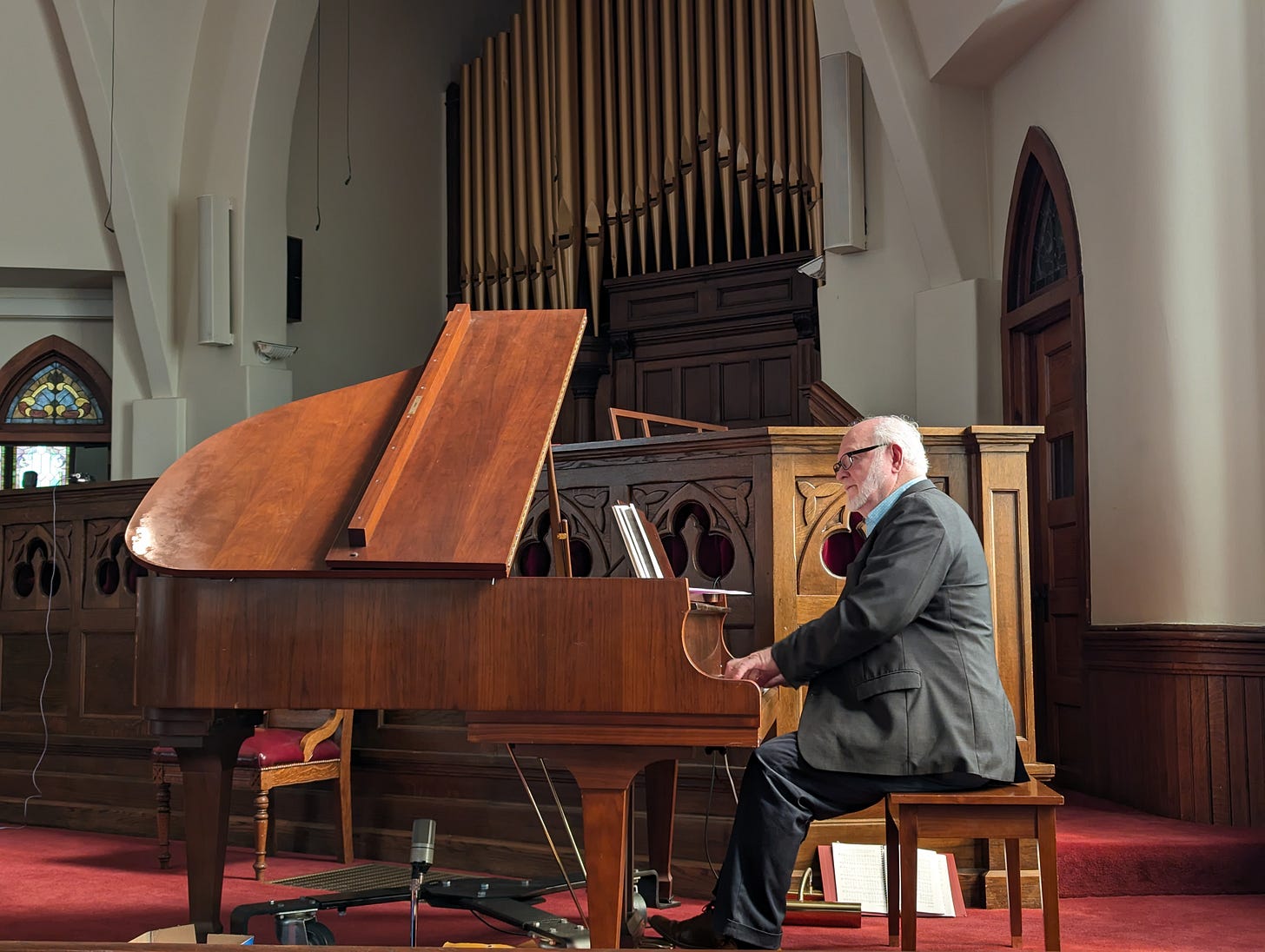
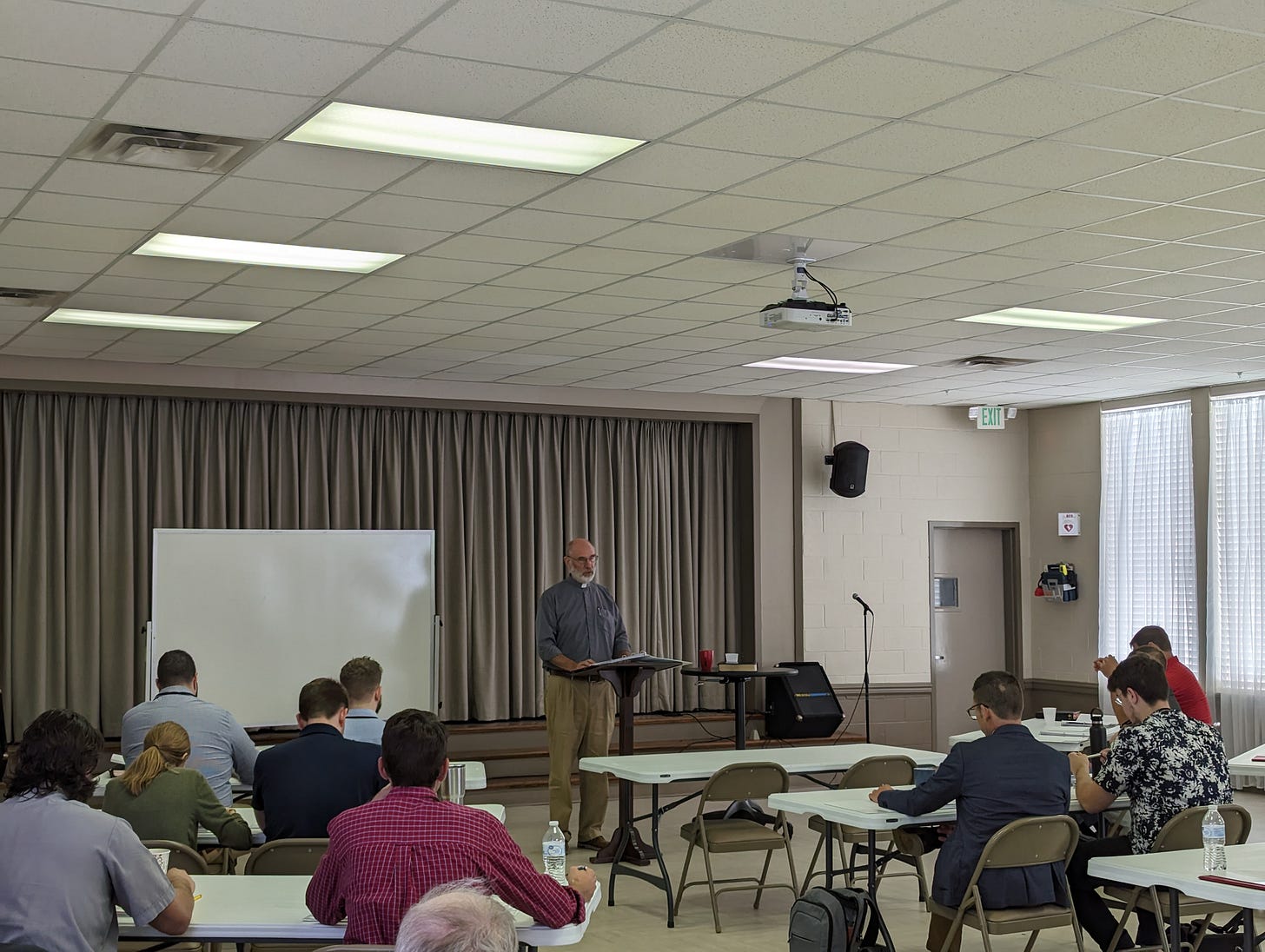
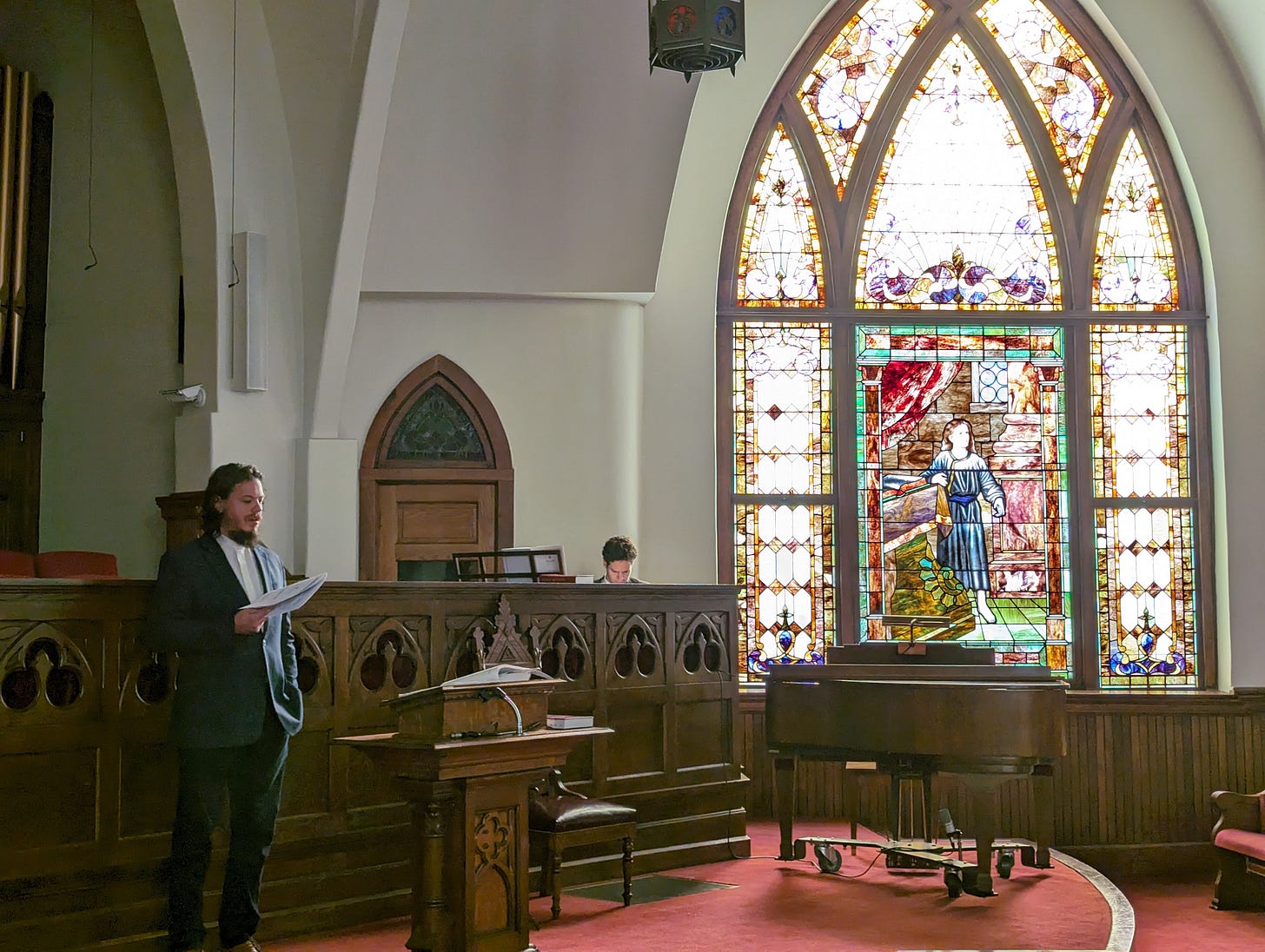

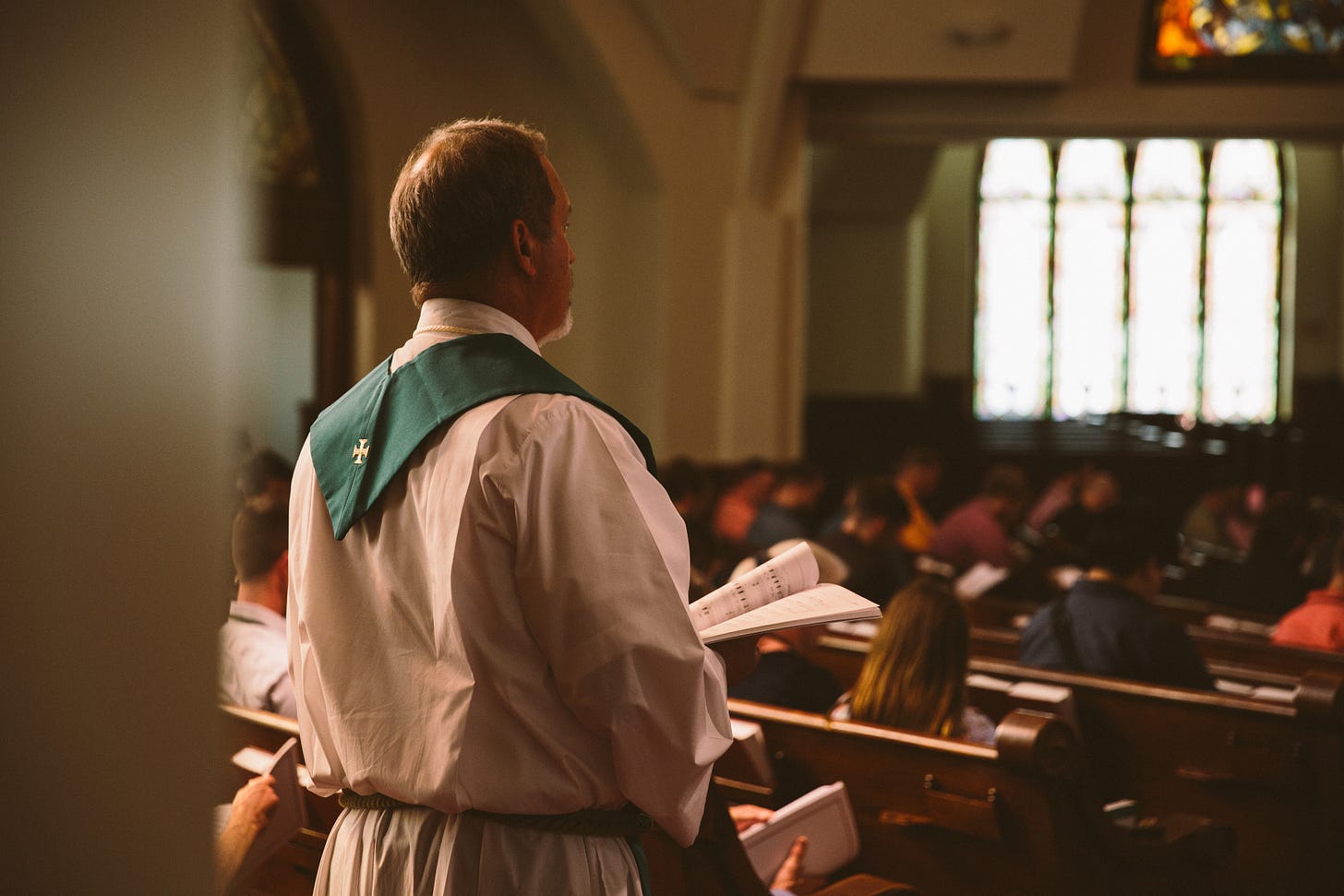
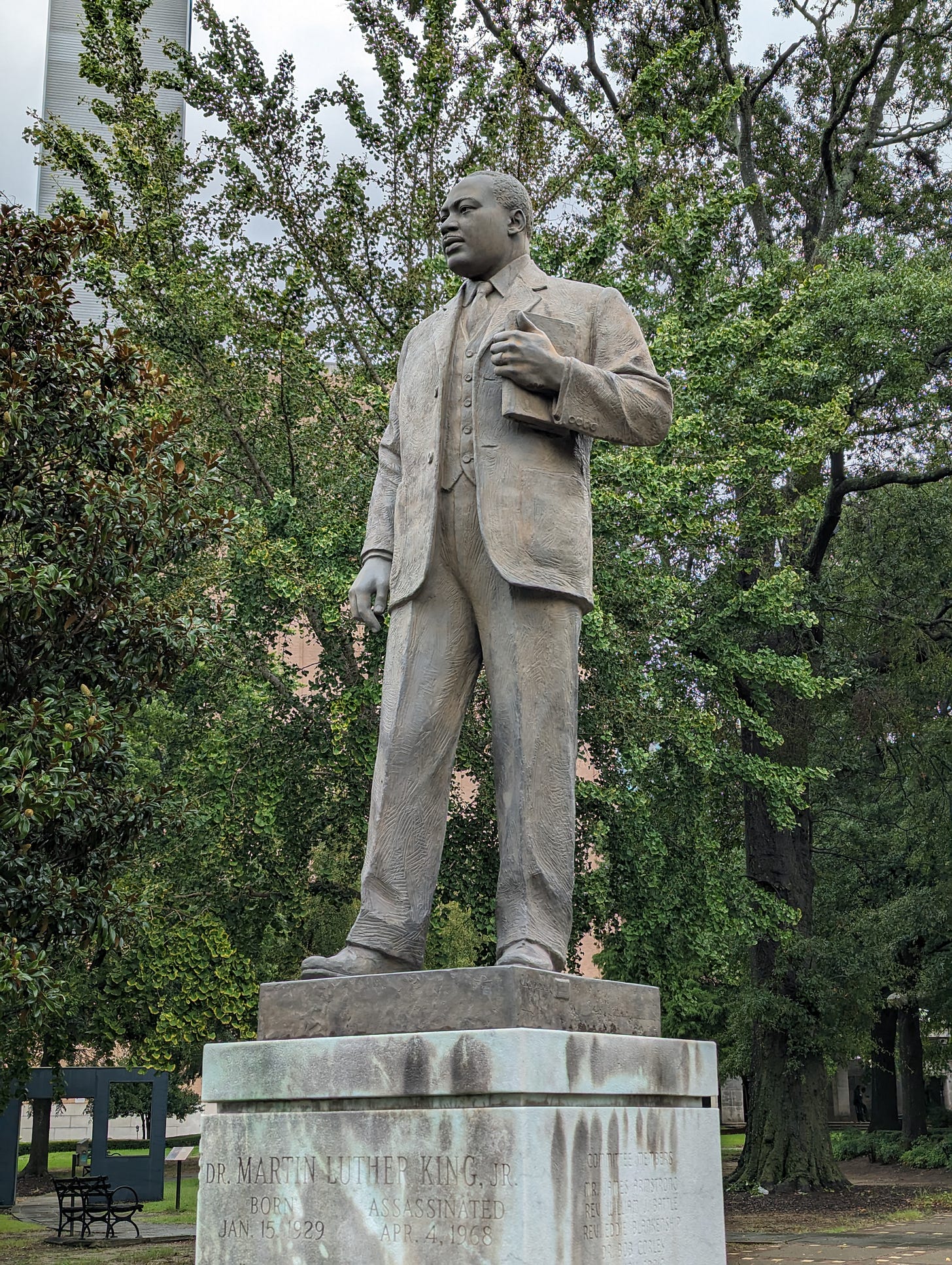
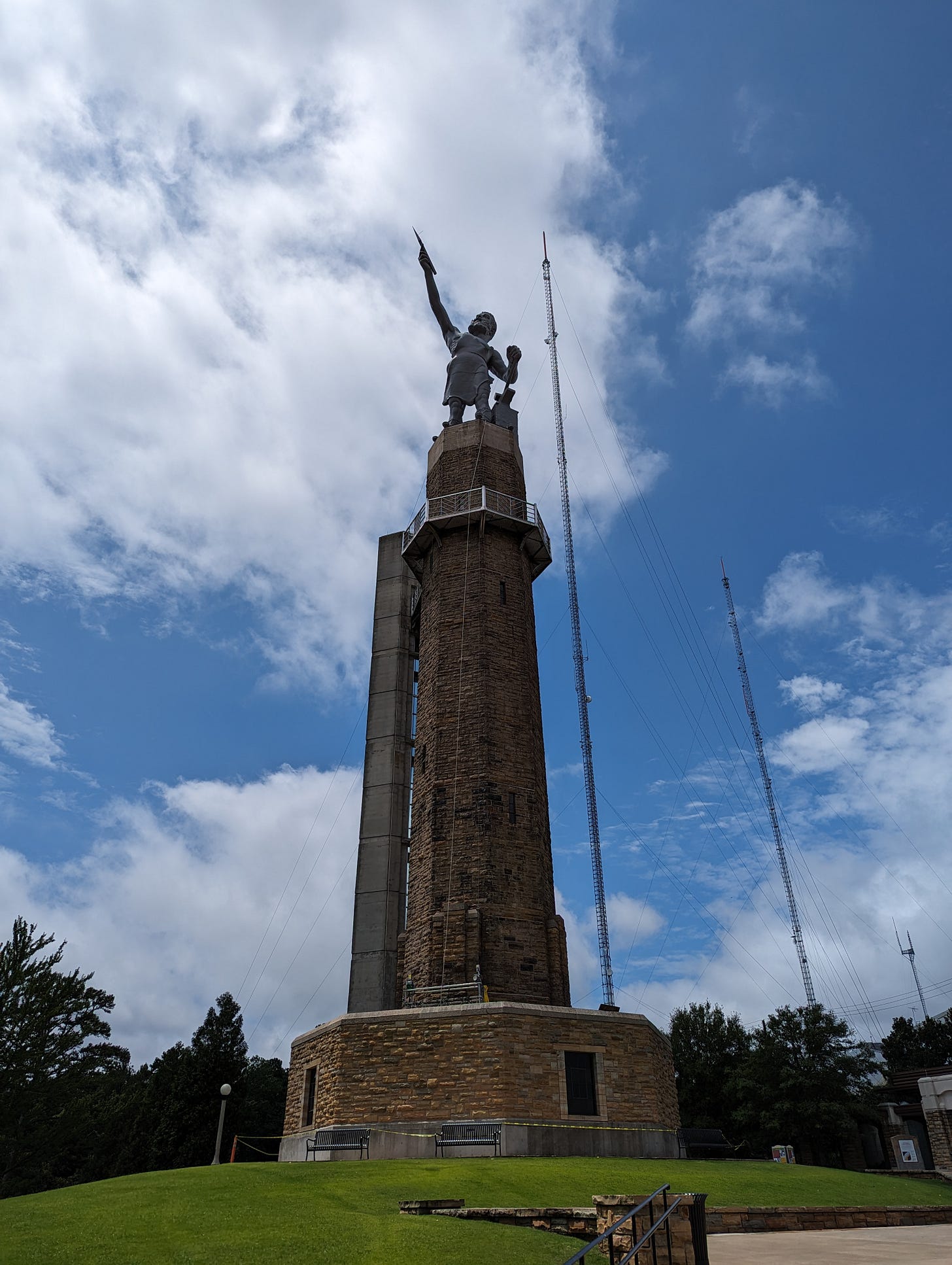
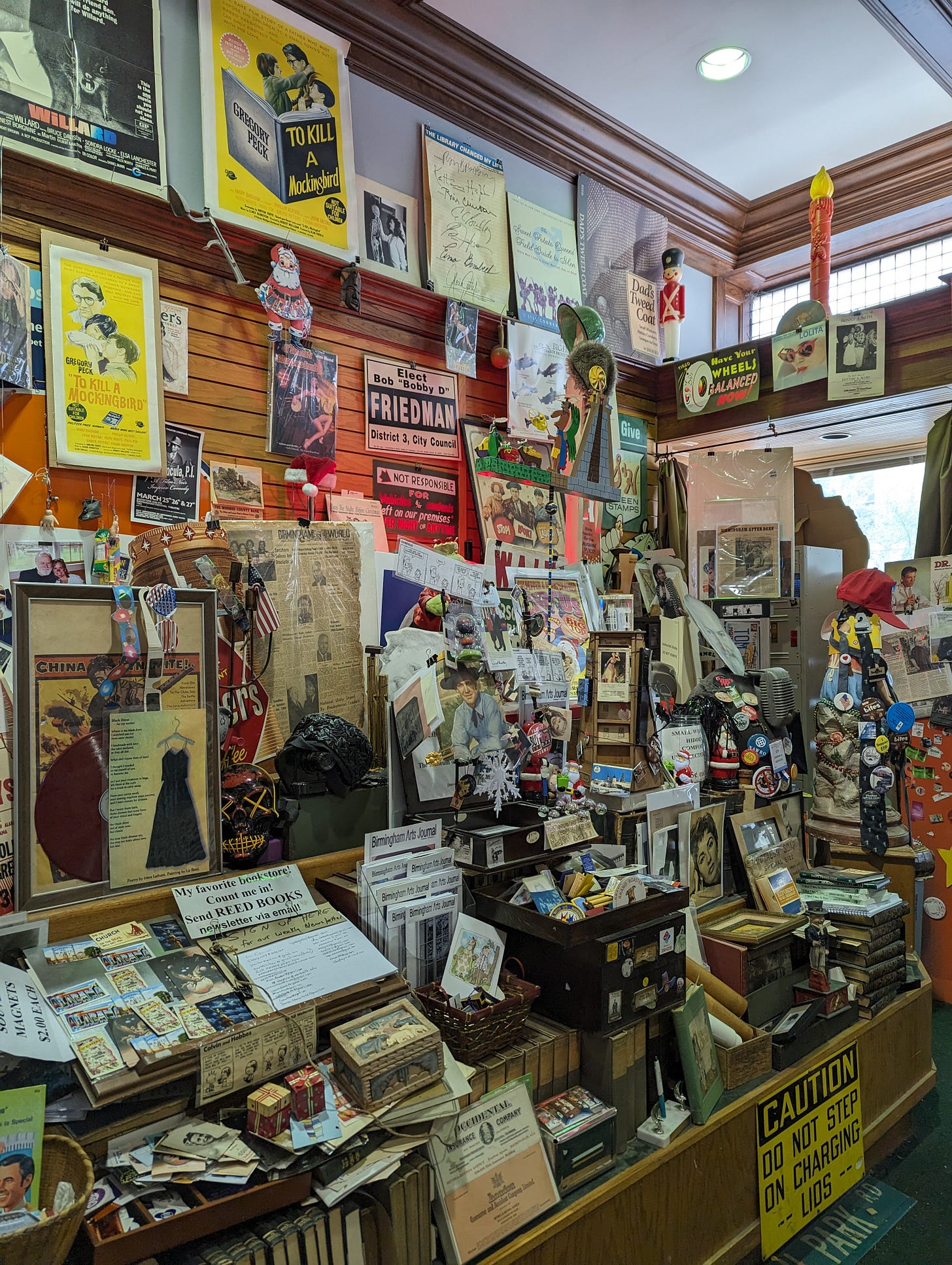
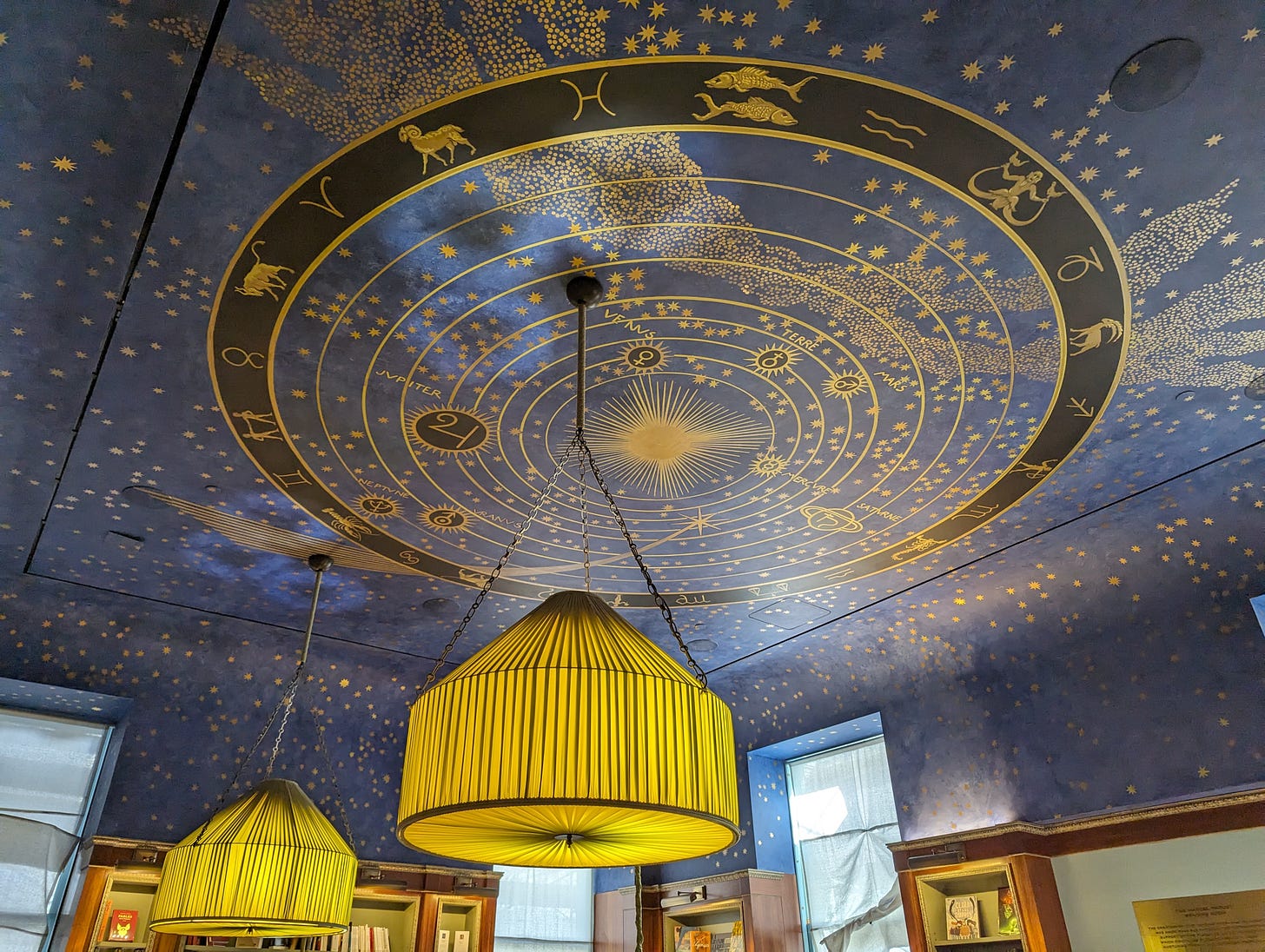

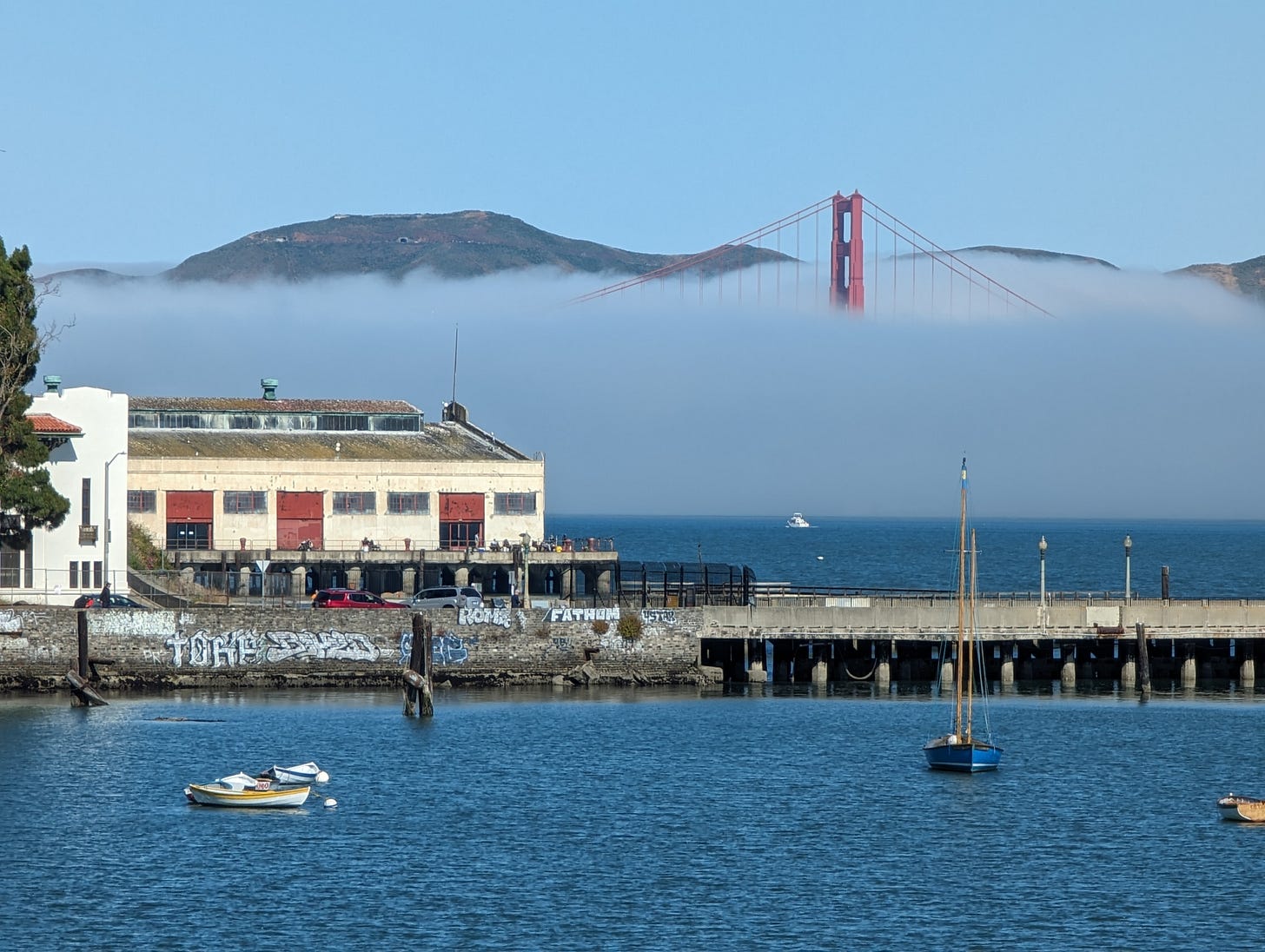

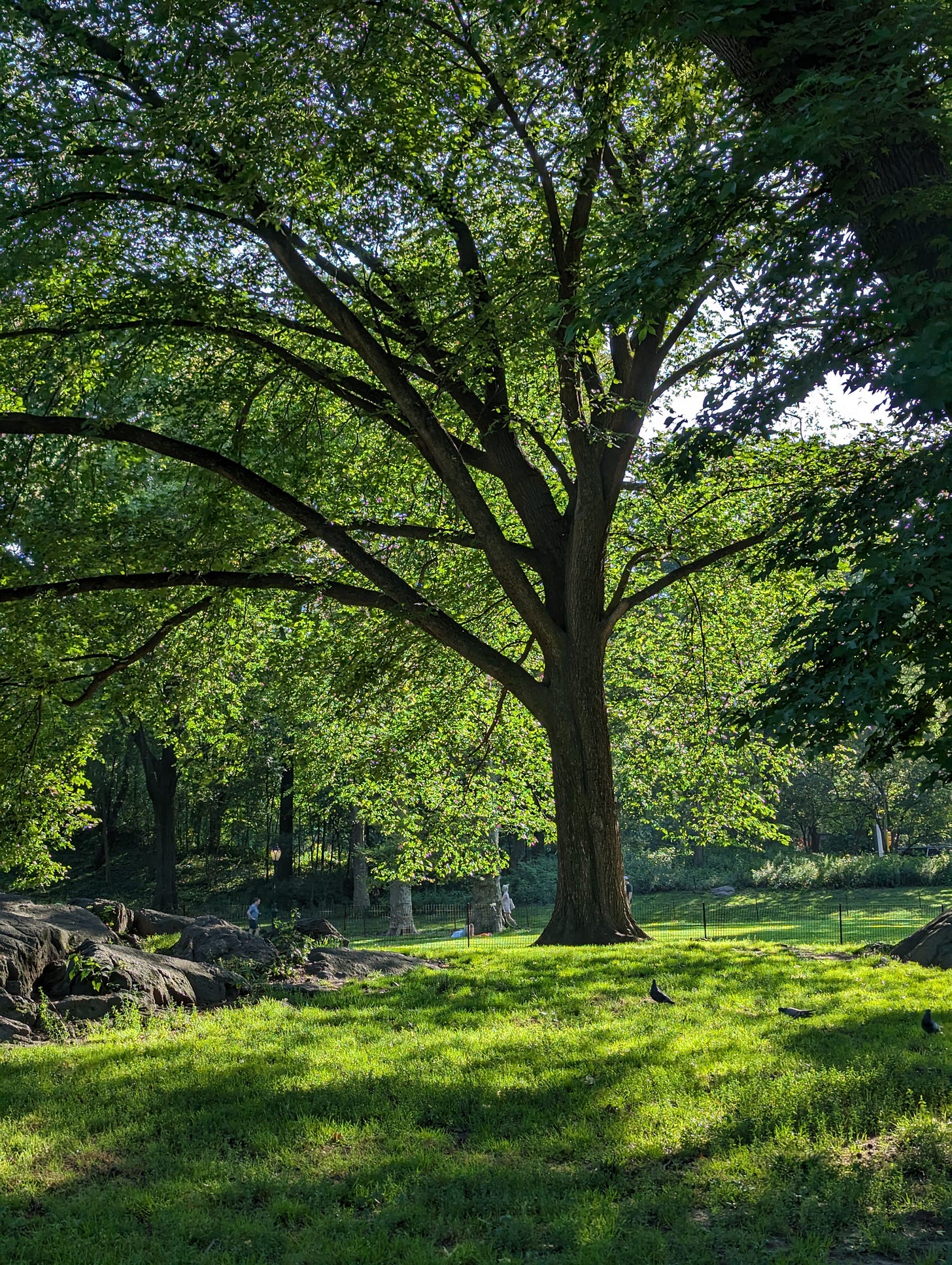

wonderful as always. That hippie Christian nerd party sounds like a great time.
"terminate upon some consumption"
did you perhaps mean consummation? (perhaps they're the same... I'm not much of an etymologist)
I wonder what is going on, re: nuptial typology, with Jacob's double marriage?
It was only very recently that I read James Jordan's take on John 8, whereby he posits that the accusers were incapable of judgment not only for reasons of broken due process, but because they were unjustified by God. He worked this theory into his larger theme of sanctified mankind moving to maturity and being able to discern / judge. Perhaps the caught woman is being granted the ability to judge rightly through her deliverance, while the accusers are being, terrifyingly, denied their ability to judge through their blindness. "Because you say I see, you are blind." Thus Christ's bride is granted the ability to judge since judgment begins with the household of God.
Also, Alastair, my inner middle schooler was dying while reading some of your (surely inadvertent) double entendres in your John/marriage discussion.